Business Information for Education Decision Makers







Bett 2023 showcased the latest cutting-edge technology designed to enhance teaching and learning


Creating clean, hygienic and safe environments for building users to thrive in


Inspiring your students to success and delivering a first class educational experience is your priority. Ours, is delivering you the products and services you need to facilitate that.




We understand running a school or college is now more like running a business, with strains on resources, budgetary challenges and administrative complexities in procuring supplies. For over 30 years Viking has been committed to working with business leaders in education and other sectors in the UK and across Europe. We provide the procurement solutions and high quality, competitively priced products you need, so that you can concentrate on inspiring the leaders of tomorrow.
Helping students become the greatest version of themselves should be applauded, which is why we are delighted to recognise and celebrate today’s business leaders in education - as the headline sponsor of the Education Business Awards. We look forward to seeing you at the event. But, if you’re unable to make it, contact us to see how we can support you inspire tomorrow’s leaders, today.


A walk around this year’s Bett show in March was an impressive eye-opener to just how much technology there is to help the education sector. From solutions that improve lesson-delivery, to the quirky tech that really inspires pupils, there was something for every need, as outlined in our Bett review on page 35.
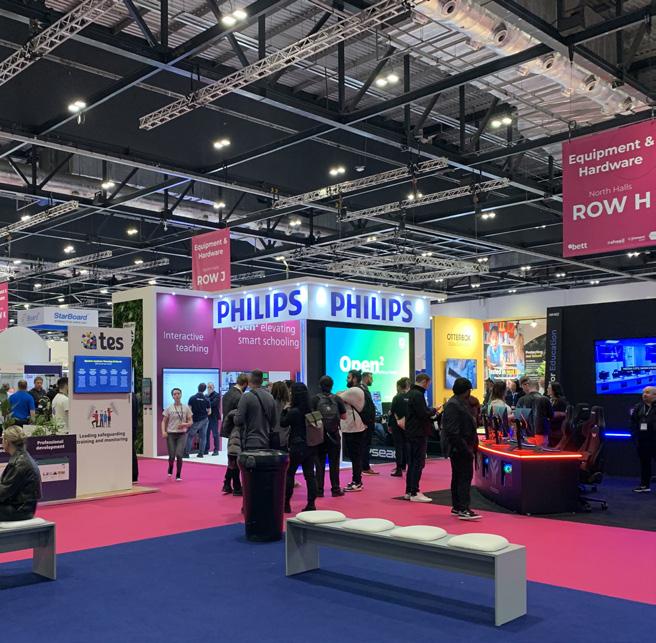
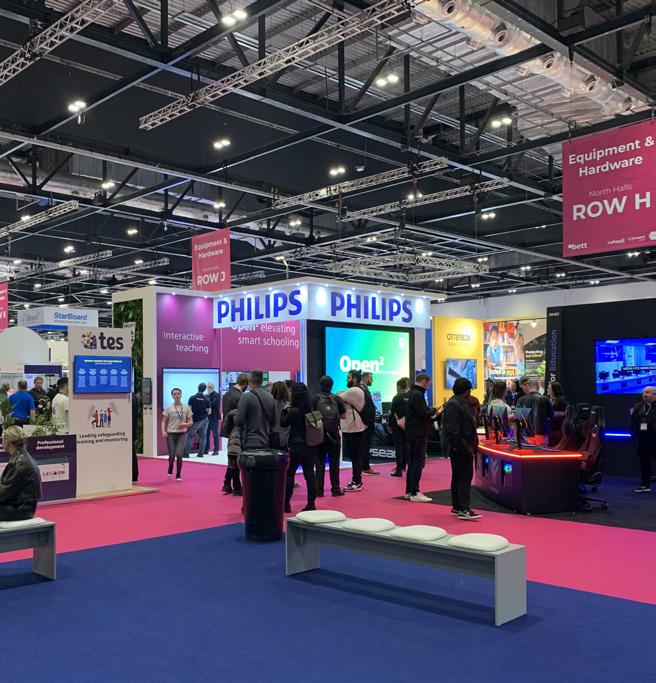
With the sheer amount of education technology available though, it can often be overwhelming for schools who do not have the time or money to get any EdTech investment wrong. On page 27, Al Kingsley explores the importance of aligning EdTech purchasing with a schools’ unique needs and how to ensure that schools get the most out of their investment.
The increase in schools falling victim to cyber attack shows how the education sector – and the vast amount of data it holds, is a desirable target for cyber criminals. This edition of Education Business signposts the free tools and resources available to schools to help them become more resilient, on page 43.

Sustainability and the environment continues to be high on the agenda, with a government ambition for the sector to be net zero by 2030. With a massive transformation needed to hit the goal, Dr Sally Uren, chief executive at Forum for the Future, offers some advice on the first steps that schools can take. We also look at how new buildings constructed under the School Rebuilding Programme are to be net-zero and resilient to climate impacts, on page 21.

 Angela Pisanu, editor
Angela Pisanu, editor
To register for your FREE Digital Subscription of Education Business magazine, go to www.educationbusiness.net/digital-subscription or contact Public Sector Information, 226 High Road, Loughton, Essex IG10 1ET. Tel: 020 8532 0055 www.educationbusinessuk.net

© 2023 Public Sector Information Limited. No part of this publication can be reproduced, stored in a retrieval system or transmitted in any form or by any other means (electronic, mechanical, photocopying, recording or otherwise) without the prior written permission of the publisher. Whilst every care has been taken to ensure the accuracy of the editorial content the publisher cannot be held responsible for errors or omissions. The views expressed are not necessarily those of the publisher. ISSN 1474-0133
Education Business is a member of the Independent Press Standards Organisation (which regulates the UK’s magazine and newspaper industry). We abide by the Editors’ Code of Practice and are committed to upholding the highest standards of journalism. If you think that we have not met those standards and want to make a complaint please contact Polly Jones or Angela Pisanu on 0208 532 0055. If we are unable to resolve your complaint, or if you would like more information about IPSO or the Editors’ Code, contact IPSO on 0300 123 2220 or visit www.ipso.co.uk





07 News
Workload getting in the way of teacher training; Next stage of universal free school meal roll-out in Wales; Government should pause post-16 education reforms
A significant transformation is needed for education institutions to hit the goal of being carbon neutral by 2030. So what are the first steps that can be taken? Dr Sally Uren, chief executive at Forum for the Future, offers some advice to get started

Leading experts from the ‘Tackling Air Pollution At School’ (TAPAS) network are calling for a clean air stragegy for schools. Dr Katherine Roberts, TAPAS network manager, explains why
Schools built under the School Rebuilding Programme are to be net-zero in operation and resilient to climate risks. So what does this mean? And what can we learn from the first net zero school to be completed under the programme?


EdTech can save schools time and money whilst transforming teaching and learning. But it takes time to get it right. Al Kingsley, chair of Hampton Academies Trust, explores the importance of aligning EdTech purchasing with a schools’ unique needs and how to ensure that schools get the most out of their investment

With many schools lacking female students in computing, student Ahana Chibber speaks to BCS, the Chartered Institute for IT, about her experience of studying Computer Science A Level and being the only girl in the year group to do so
Bett 2023 was a hub for innovation, showcasing the latest education technology and hosting packed conference theatres led by inspiring figures and leading education professionals

With the increase in the number of cyber attacks on educational settings, we examine the range of free tools and resources available to schools to increase their resilience
The Schools & Academies Show in London on 17 May brings together thousands of school and academy leaders to connect, discuss new ideas and debate the biggest challenges and trends that will shape the future of the education sector

With research showing that many teachers and parents underestimate the recommended time children should be active for, this year’s National School Sports Week is aiming to get more children ‘playing for fun, playing for 60’ between 19 and 25 June

The Education Business Awards, held on 14 June in London, continues to celebrate the outstanding work, commitment and achievements of the education sector. With new categories introduced this year, the stage is ready to welcome the unsung heroes of the sector

Designed to make installation and commissioning quicker and easier, REACH Wireless is Apollo’s latest hybrid-wireless solution.


Scan the QR Code to explore how REACH Wireless can make installing a new fire detection system in your school easier than ever.

“A Colchester school now has a single, integrated fire system across the main school building and a demountable classroom thanks to Apollo’s REACH Wireless system.”
FOR MORE INFORMATION VISIT: APOLLO-FIRE.CO.UK/REACH
Teachers are not getting the high-quality training they need and struggle to find time for professional development due to their mounting workloads, according to an independent review by Ofsted.
The review found that schools understand the importance of offering professional development opportunities. However, leaders and teachers struggle to find time for training due to competing priorities and the training that they do get doesn’t always have a positive impact.
The report is phase one of a two-part review commissioned by the Department for Education (DfE) looking at the quality of teachers’ training and development in schools.
In 2021, the DfE made reforms to the early career framework (ECF) and national professional qualifications (NPQs) as part of its teacher recruitment and retention strategy. The ECF currently entitles new teachers to up to 3 years of learning support at the start of their careers. This training is designed to further enhance their practice, knowledge and working habits. NPQs enable existing teachers, middle leaders and senior leaders to develop their expertise in specialist areas of teaching or leadership.
The review found that the new training packages, when delivered well, represent a significant step forward because they are research-informed and designed to include both dedicated time for professional development and follow-up with mentors. Generally, early career teachers and staff undertaking NPQs were more positive about their development
experiences than other teachers, in terms of it being relevant and of high quality.
Most teachers told Ofsted that improving their teaching was the main reason for taking up professional development opportunities, but they did not always get time to apply the training.
Senior leaders noted that while in-house teacher training is common, some aspects, including mentoring, were not always possible due to competing priorities such as covering staff absence, lesson preparation and marking.
The research also found that schools have prioritised training and development around the curriculum, and that teachers want more training on teaching pupils with special educational needs and/or disabilities (SEND).
It also found that leaders and teachers are often unimpressed with the quality of training and development received.



His Majesty’s Chief Inspector, Amanda Spielman, said: “Schools know that professional development is vital, so it’s disheartening to see poor-quality training and workloads getting in the way.
“It’s important that teachers get high-quality training at every stage of their career. Training helps teachers learn new techniques and gain confidence, which in turn helps pupils.
“The ECF and NPQs are a positive development, but as we would expect with a new programme, there remains some work to do on its implementation.”

The Welsh Government has announced £70 million in funding to support the next stage in the expansion of free school meals in all primary schools in Wales.
All primary school children and more than 6,000 nursery-age pupils attending a maintained school will be eligible for free school meals by 2024.
The next phase of the expansion to provide free school meals to all pupils in primary school will begin in September 2023, with the offer growing to include the majority of learners in years three and four. The programme will then expand further in April 2024, reaching years five and six. Where local authorities are able to reach these year groups ahead of these milestones they have been funded to do so. £260m has been committed to implement the programme over three years. This included £60m of capital funding for local authorities invested over the last two years to support improvements to school kitchen facilities, including purchasing equipment and updating digital systems.
The first year of delivery has focused on building the capacity for schools to deliver the increased offer. These efforts have ensured a swift rollout of the offer during the first phase, with the majority of learners across Wales in Reception, Year one and Year two benefitting from the offer of a free school meal since the start of the summer term.

Minister for Education and Welsh Language, Jeremy Miles said: “We are working at pace to ensure that every primary school child benefits from a nutritional school meal and that no child goes hungry.
“We know how difficult it is currently for families during the cost of living crisis. Universal free school meals provide significant financial help to families, while providing a nutritional meal to help children concentrate on learning.
“I would like to thank local authority teams across Wales who are working hard to rollout universal free school meals quickly.”
A new report by the Education Policy Institute, in partnership with Renaissance, shows that the pandemic is still having an adverse effect on pupils’ learning. This new analysis uses Renaissance’s Star Reading and Star Maths Assessments to create a large sample. It shows that mathematics outcomes for primary aged pupils remain below pre-pandemic levelsamounting to just under 1.5 months’ worth of learning by the end of the autumn term. Outcomes for younger year groups are even further behind pre-pandemic norms. More positively, average outcomes in reading have largely been recovered in primary schools, this is consistent with results from national assessments last summer.

The gap in reading outcomes between primaries with the highest levels of socioeconomic disadvantage and those with the lowest is still around six per cent wider than at the start of the pandemic. This suggests that pupils in disadvantaged areas have suffered bigger adverse learning effects than those in more affluent areas.
Jon Andrews, Head of Analysis at the Education Policy Institute, said: “For many children, their time in education has been hugely damaged by the disruption of the Covid-19 pandemic. Schools have been working hard to mitigate the effects of the pandemic, but it is clear that those effects are still being felt, particularly in maths and for children in more disadvantaged areas.
“The Prime Minister has set out a bold ambition for all young people to study maths up to age 18. There are many obstacles to meeting that ambition, and this analysis highlights that among them is the fact that younger children have fallen behind in their maths as a result of the pandemic. There is a risk that government focus on education recovery is waning, and this analysis is a wake-up call that there is still much work to be done.”
Joan Mill, group managing director of Renaissance International said: “We know how much is being done by teachers on education recovery and supporting all pupils through effective in-school interventions will remain critical in the months and years ahead.
“This analysis, made possible through robust data from the millions of Star Assessments administered annually, shows that while maths outcomes remain a cause for concern, it is equally important that reading recovery is maintained. That is why Renaissance is also supporting teachers and leaders with additional resources and personalised practice to help accelerate learning for all students.”
Primary pupils still behind in maths after pandemic impact
With energy prices relentlessly rising, there has never been a better time for schools and local authorities to reduce overhead costs, increase productivity and achieve




























decarbonisation.
A smart well-connected lighting solution for each area, not only benefits your schools from more productive, accurate staff, but energy efficient LEDs will also cut your electricity bills, whilst reducing carbon footprint, boosting performance and improving well-being.



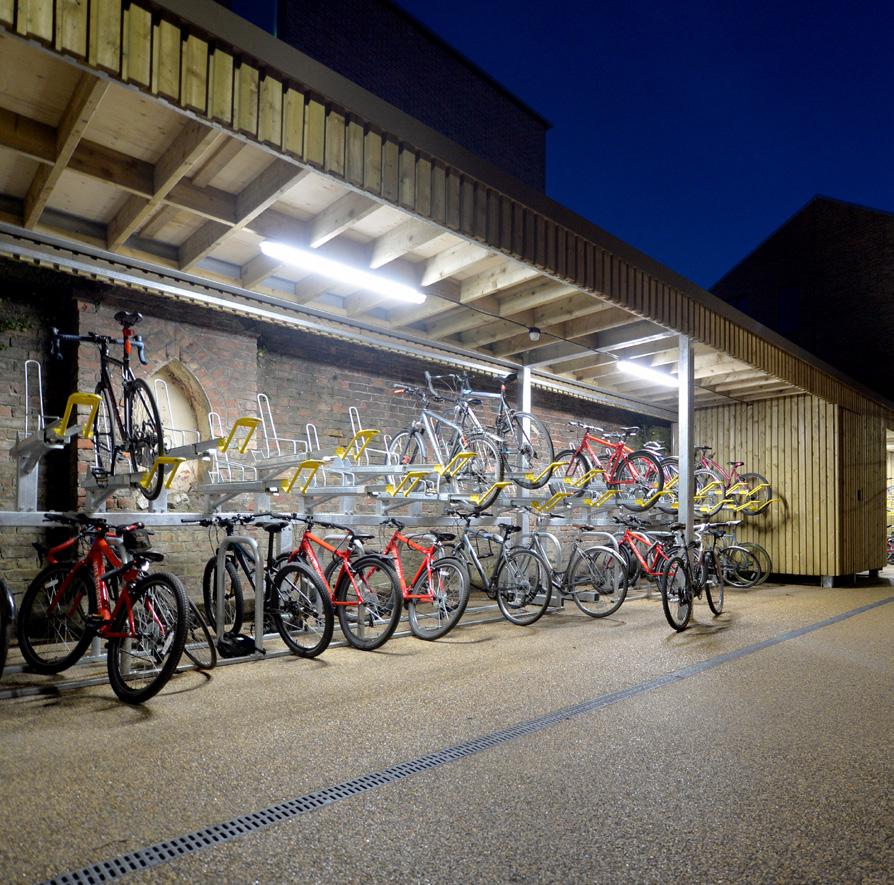

With Schréder’s EXEDRA , each luminaire can be monitored, metered and managed in a lighting network. As a result, this improves efficiency: accurate real-time data and energy savings of up to 85%.






















at an individual school level, limiting the extent to which inspectors can report on the work of the trust, and its influence.
The report also finds that conversations with trusts are an integral part of a school’s inspection, and that inspections cover the influential role that trusts have in the quality of education in their schools, particularly in designing the curriculum.

level can leave the role of the trust in inspection unclear, causing frustration for trust leaders and inspectors.

Both trust leaders and inspectors highlighted that inspection at school level does not hold the trust sufficiently accountable or attribute enough credit to the trust’s work.
Ofsted has published a report exploring how multi-academy trusts’ work is evaluated during inspections and their influence over their schools. The new research finds that trusts are an important part of school inspection and have some involvement at each stage of the process. However, Ofsted’s legal remit only permits inspections to operate
It found that inspectors recognised the role of many trusts in setting expectations for teaching, and for teaching and managing behaviour, and that trusts often set the strategic vision for personal development and use their resources to provide opportunities for pupils. The report found that trust leaders said that they were always involved in strategic school leadership decisions, regardless of their operating model.
The fact that Ofsted’s legal powers require inspection to operate at school

Ofsted Chief Inspector, Amanda Spielman, said: “School trusts are an integral part of the education landscape, with some running dozens of schools. They oversee all aspects of schools’ work and often turn around some very challenging situations.
“The inspectors and trust leaders we spoke to highlighted that inspection only of individual schools does not hold the trust sufficiently accountable, or credit the trust enough for its work.”
The Education and Welsh Language Minister Jeremy Miles has said that school uniforms should be made cheaper and that school logos should not be compulsory, as he published new statutory guidance.
The UK Chief Medical Officer (CMO) recommends that children aged 5 to 18 should be highly active (with an elevated heart rate) for an average of at least 60 minutes a day, across the week in order to stay happy and healthy.
However, research by Teacher Tapp commissioned by the Youth Sport Trust shows that over half of teachers (52 per cent) believe that children should be active for 30 minutes a day or less, and only 35 per cent of teachers think that children should be active for 60 or more minutes a day. This highlights the need for more support and training for schools and teachers.
Similarly, YouGov research commissioned by the Youth Sport Trust reveals that parents are more likely to believe that children only need to be active for 30 minutes a day, less than half of the recommended guidance. In a bid to drive up awareness of the Chief Medical Officers’ guidance, the charity has launched the annual National School Sports Week campaign, powered by Sports

Direct, to get more children ‘playing for fun, playing for 60’ between 19 and 25 June. The campaign will work with families, schools and across society to ensure that people are better informed about the benefits of sport and play for their children. National School Sports Week is aiming to boost children’s activity levels by encouraging people and organisations to make a #PledgeToPlay for 60 minutes every day during this week. Chief executive of the Youth Sport Trust, Alison Oliver MBE, said: “National School Sports Week is a great opportunity for us to engage with schools and families. We’re excited to share some brilliant ideas and guidance as well as uniting a movement of organisations to help amplify why this is important and what’s available at a local level. We are inviting the nation to #PledgeToPlay.”
The announcement followed a public consultation on school uniform guidance, which sought opinions on affordability in order to support families through the cost-of-living crisis. Fifty-six per cent of those who responded agreed that logos should not be required on school uniforms in comparison to 27 per cent who disagreed. Nearly 90 per cent of respondents also felt that schools should avoid single supplier agreements.
There was almost universal consensus that schools should operate uniform exchange or recycling schemes. The new guidance calls for arrangements to be in place so that second-hand school uniforms are available for parents and carers.
The Minister, said: “We know that branded school wear can be a lot more expensive for families – that is why schools shouldn’t make them mandatory. There certainly should not be a requirement for multiple items to be branded.
“I know that most schools are doing everything they can to keep costs down for families. But we have still seen too many cases where families have had to purchase expensive uniforms. The guidance we are publishing will support schools in reducing these costs.”
Teachers underestimate how long children should be active for
Welsh schools told logos should not be compulsory
We have specialised in designing and manufacturing education toilet cubicles and washroom systems for over 40 years. We know that performance, practicality and cost effectiveness are key considerations when specifying washrooms for children and young adults. What’s more, we’re proud to offer our industry-leading education washroom solutions in a wide range of colours and in a variety of door heights to suit all education settings. From nurseries to universities, we’re sure to have suitable solutions for your projects.
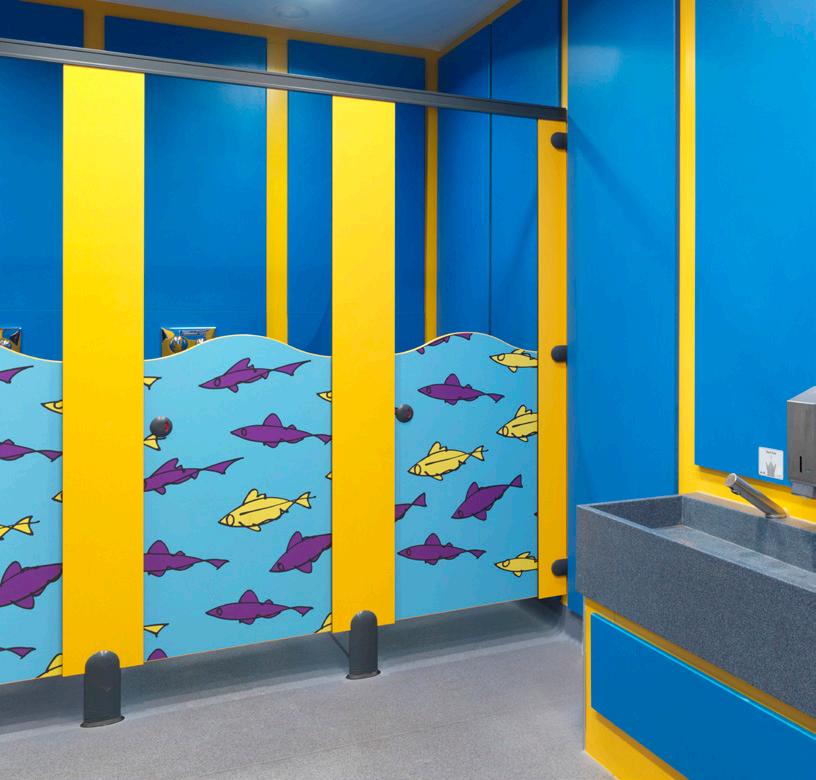

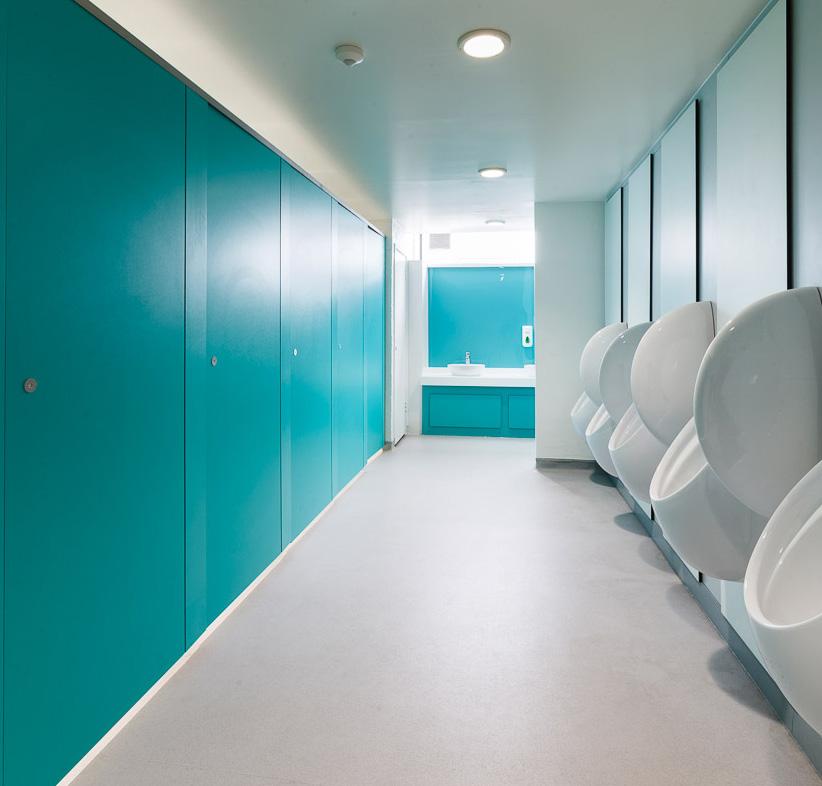

Contact our team today to discuss your education washroom projects.

According to a new report by the Education Committee, the government should slow down with its post-16 education reforms, as rushing ahead risks leaving young people without suitable qualification pathways and deepening worker shortages in key sectors.
This is due to the Department for Education’s plans to withdraw funding from tried and tested Applied General Qualifications (AGQs), such as BTECs, before there is sufficient time for the evaluation and rollout of T Levels, the recently introduced technical alternative to A Levels.
The Committee’s report urges DfE to place a moratorium on the withdrawal of funding for AGQs until there is robust evidence that T Levels are demonstrably more effective at helping students progress, meeting industry needs and promoting social mobility. This argument was made by the vast majority of those who submitted evidence to the inquiry.




The cross-party Committee finds that withdrawing funding for many AGQs prematurely risks constricting student choice and narrowing progression opportunities. This could in turn lead to an increase in the number of young people not in education, employment or training (NEET).
Meanwhile, the introduction of T Levels has been weakened by concern over unequal regional access to industry placements (the mandatory 9-week component of the programme), scalability concerns, and an apparent decline in employer interest in offering placements. T Levels will not succeed without significant industry buy-in.
The Committee argues that the ability of businesses large and small to offer sufficient, high-quality placements, and a clear track record of T Level success, should be prerequisites to scrapping AGQs.
MPs heard that T Levels may not be accessible to students with lower academic attainment or with special educational needs and disabilities (SEND). DfE introduced the T Level Transition Programme for learners who require an additional year of preparation, but only 14 per cent of the programme’s first cohort of students moved onto a T Level – a figure the Committee calls “entirely inadequate”.
The report also notes the dramatic 41 per cent decline in under-19s starting apprenticeships between 2015/16 and 2021/22. New starts on level 2 (GCSE equivalent) apprenticeships fell 69 per cent over the same period.
The majority of apprenticeships are instead undertaken by older, more qualified adults. The Committee urges the Government to address this and make apprenticeships the gold-standard ‘earn and learn’ option for young people.
MPs also call for a “wholesale review” of 16-19 funding after hearing about the difficulties the sector faced due to real terms reductions in funding between 2010 and 2020.

A new survey exploring the impact of the cost-of-living crisis on education staff has revealed over 50 per cent of workers have spent their own money on supplies for the classroom. Of those respondents buying materials, almost 24 per cent find themselves regularly purchasing materials, with 28 per cent doing so occasionally.
The survey, by membership service Discounts for Teachers, polled over 1,000 workers from across the education sector, to highlight the financial struggles affecting educators’ dayto-day lives. Discounts for Teachers is calling for greater support to help incentivise the sector and keep quality teachers in schools.

With respondents spanning schoolteachers to catering staff, and university lecturers to nursery workers, a further one in five have taken an additional jobs as prices continue to
rise. Amongst these additional jobs, education staff cited tutoring at weekends, working in supermarkets, babysitting and administration work, on top of their overstretched workloads. Over 75 per cent of respondents also said the current economic climate is having a negative impact on their mental health and wellbeing. For a sector facing wellbeing and recruitment challenges, these findings underline the risk that today’s financial pressures pose to retaining good quality education staff. Beyond impacting their work in the classroom and ability to support students, the research further highlights where staff have made cutbacks at home. A significant 78 per cent of respondents have restricted turning the heating whilst 64 per cent are foregoing putting money into savings accounts because of skyrocketing energy bills, and 16 per cent said they have made the biggest cutbacks in groceries and food. Strikingly, many respondents said the current cost-of-living crisis has impacted their ability to take industrial action, with a quarter saying it had completely affected their ability to strike.

The Welsh Government has announced a new bursary and grant to increase the number of teachers who can speak Welsh. A new £5,000 bursary will be available to teachers who gained Qualified Teacher Status from August 2020 onwards, and who have completed three years of teaching Welsh or through the medium of Welsh. The bursary will initially be available until Autumn 2028 to assess its success in encouraging teachers to enter and remain in the profession. Alongside this, a second round of the Welsh-medium workforce capacity building grant has opened, with a total pot of £800,000. This scheme provides small grants to schools so they can develop innovative ways of resolving the recruitment challenges they face. This grant gives schools the freedom to tailor plans to the needs of their own locality, workforce and demographics. During the first year of the grant successful projects included apprentices appointed to train towards becoming teaching assistants and secondary schools working together to deliver joint-provision for year 10 and 11 learners who were resitting GCSE exams.
Increasing the number of teachers who can teach Welsh and through the medium of Welsh is said to be vital to realising the Welsh Government’s vision for a million Welsh speakers by 2050 and to achieve the ambitions of the White Paper for the Welsh Language Education Bill. Jeremy Miles, The Minister for Education and Welsh Language, said: “One of our biggest priorities for achieving a million Welsh speakers is making sure we have enough teachers to meet the demand for learning in Welsh. This package of support will strengthen our Welshspeaking education workforce and ensure more people can take advantage of the exciting career opportunities on offer.”

· 3D Rendered Design
· Payback & Cashflow Calculations
· Structural & Drone Surveys
· DNO Applications
· Full Turnkey Installation
· Funding Options
BENEFITS
· Immediate Energy Saving


· Reduce Carbon Footprint
· 25 Year Warranty
· Clean Energy Generation
A significant transformation is needed for education institutions to hit the goal of being carbon neutral by 2030. So what are the first steps that can be taken? Dr Sally Uren, chief executive at Forum for the Future, offers some advice

Last year, the Department for Education set a goal for all schools, colleges and universities to be carbon-neutral by 2030, and has recently announced plans to secure an outside contractor to help schools with their environmental plans.



As it stands, we are currently on track for a rise of 4°C by the end of the century – our food systems won’t operate with that level of elevated temperature. We are also not on track to meet the UN’s Sustainable Development Goals.
In order to address the climate crisis and reach net zero emissions, it’s important for all sectors – including education – to quickly become carbon neutral. Education is also a key enabler for sustainable development, having the foundations to equip current and future generations on how to tackle climate change. It’s time for us to take a different, unchartered path to up our ambition around sustainability.
Understanding your carbon footprint The first step for most educational institutions is to understand what the impact of its carbon footprint really is. This can be done by looking at energy bills, as well as the building and transport emissions an institution is responsible for. Educational institutions should also consider their scope three energy emissions – these are associated emissions that are not created by the institution itself. Scope one
and two emissions are much easier for an institution or company to track and control. Scope one emissions cover the Green House Gas (GHG) emissions an institution or company makes directly e.g. running boilers. Scope two covers the emissions an institution makes indirectly, like electricity or energy that is bought for controlling temperatures in buildings and is produced on the institution’s behalf. Scope three emissions are all the associated emissions the institution is indirectly responsible for, up and down its value chain.
Institutions have less control over the E
shouldenergyRenewableoptions be considered, with heat pumps and solar panels offering an alternative to fossil fuels
scope three emissions but it is often where the biggest impact of a carbon footprint lies. This is important to consider as one of the biggest carbon outputs in the educational ecosystem is the scope three energy used to produce the food that schools, colleges and universities buy. Next, each institution should look for opportunities to reduce their energy consumption, whether this be through investing in insulation to keep buildings warmer or switching energy supplier. A great example of tackling scope three emissions would be to look at the procurement of food and whether sourcing local or seasonal food – or even starting a school garden – can be prioritised. Renewable energy options should also be considered, with ground-sourced heat pumps and solar panels on roofs offering an alternative to fossil fuels. Solar panels capture the sun’s energy and convert it into electricity. Schools can then use the electricity, store it or send it to the grid. Use of this technology can make annual savings on a building’s electricity bills. Solar thermal panels meanwhile capture the sun’s energy and use it to directly heat
The Department for Education (DfE) has published guidance to support schools to maximise energy efficiency, reduce carbon emissions and improve sustainability.

The guidance sets out how schools and colleges can reduce their energy demand and consumption, energy costs, and carbon emissions and focuses on heating, hot water, lighting, technology, and equipment.
One of the top actions that schools and colleges can take to reduce energy costs is to understand energy usage and conduct an energy audit, so they can target where to save energy. The main way to do this is to understand energy bills, which include several costs that are typically charged through energy unit rates (dependent on the time period) and standing charges.
Understanding a school’s energy consumption and projected usage can help them budget and compare tariffs more accurately. Schools can find out how and where energy is consumed in their building by referring to the utility bills or display energy certificate (DEC). Most schools and colleges should have one in place. If you need a copy of your DEC, click here
water. This water is then stored in a hot water cylinder for use within the building.
The responsibility for
doesn’t lie at one level – this has to be a collective effort across the whole educational ecosystem, from students to the governors or top decision-makers. Beyond reducing their carbon footprint, educational institutions have the responsibility of not only reaching net zero, but simultaneously educating a future generation on how to tackle the climate crisis. At the moment, education isn’t equipping students with the knowledge or skills on how to reach a net zero carbon economy, yet it is essential for change. But it’s not all doom and gloom. The future isn’t something that simply just happens to us. The world we live in today is a result of the decisions we made yesterday. The decisions we make today will determine what happens tomorrow. So we have to hold hope, despair and possibility in the same frame and really believe that the future is ours to write. The next generation can pave the way for new solutions on how to reach the carbon target with fresh and imaginative ideas, something
The guidance from the Department for Education also advises that schools adjust temperature settings and consider reducing the temperature in some areas. It says that reducing the temperature in a building by 1ºC can save five to ten per cent of an annual heating bill. Operating the heating system for an hour less each day can save a similar amount.

Find the guidance here.
that is often overlooked. It is our responsibility to inspire students to think outside the box and encourage creativity in the climate space. The need to integrate sustainability and climate literacy is true for all stages of education: primary, secondary and tertiary, both as something to study but also as an essential part of education like Maths and English. An overhaul of the whole education system is needed to enable change-makers across all sectors and careers – the students of today are the change agents of tomorrow. The ultimate goal of education is not just reaching carbon neutrality, but to help create a just and regenerative future. L
FURTHER INFORMATION
www.forumforthefuture.org
The first step for most educational institutions is to understand what the impact of its carbon footprint really is. This can be done by looking at energy bills, buildings and transport emissions. Educational institutions should also consider their scope three energy emissions.
For most universities and FE colleges, decarbonising the way campuses and buildings are heated (and cooled) is a significant part of the net-zero challenge. But tackling the issue is not easy.
Fundamentally this means complete transition away from fossil fuels, which is challenging for complex campus sites, often reliant on trusted and well understood gas fired heating; and across a plethora of building types, ages and construction types. Moreover, many have already invested in energy-saving technologies such as Combined Heat and Power (CHP) and distributed heat networks, which makes matters more complicated still.
Universities and FE colleges across the country have already benefited from the government’s £2.4bn Public Sector Decarbonisation Scheme, which provides capital funds for low-carbon heat technologies such as heat pumps, as well as building fabric upgrades and solar photovoltaics.
However, the installation and design of these solutions are complex, often leaving estates and capital projects teams uncertain about expected performance from a carbon-saving, operational cost, and resilience standpoint.
Building energy performance gaps are a well-known phenomenon and are caused by a range of factors. With heating and cooling representing 70 per cent of building energy consumption and 40-50 per cent of energy cost and CO2 emissions, the impact of correctly performing HVAC installations is critical. Evidence from studies of over 400 installations, including systems in hospitals, universities and other non-residential buildings reveal that 95 per cent performed
sub-optimally – meaning they cost more to run and produce higher CO2 emissions than necessary.

Meanwhile, low carbon heat technologies such as heat pumps are not a like for like replacement for gas boilers and even in new and recently upgraded systems, significant opportunities to optimise performance are being missed.
All too often, low carbon heating solutions fail to perform as expected due to insufficiently well-executed engineering design (too much focus on individual components, without a whole system performance view); poor system commissioning; and failure to ensure existing heating installations are made “low carbon heat ready” first. Adoption of low carbon heat therefore is not simply a question of replacing boilers with heat pumps. It requires a full system, “root and branch” approach in order to ensure that additional capital expense is avoided by eliminating unnecessary plant and equipment over-sizing, and that performance risk is reduced by ensuring all causes of inefficiencies in the existing installation are identified and tackled, before low carbon technologies are applied. This approach will also ensure efficiency of low carbon technologies is maximised by optimising the whole installation for low temperature operation, and that risk of inflated energy costs/carbon emissions is removed as unintended consequences of “value engineering” at the contractor/installation stage. It will also ensure installations are handed over that operate “first time right” through correct commissioning; Hysopt has produced a useful e-book which covers this in more detail.
An HVAC system digital twin is a virtual replica of the heating and cooling system installation that allows the planned design to be optimised before building it in real life; while also providing the necessary transparency and continuity across all project stages to ensure the optimised design intent
is delivered in the final physical installation. This technology is valuable for evaluating the potential performance of alternative options in the engineering stages against project KPIs such as carbon and energy costs, empowering estates and capital projects teams to make more informed, fact-based decisions during the early stages of a project and engage with their supply chain in an open and transparent way. Moreover, a digital twin acts as a single point of truth for system performance at all stages of the project design, engineering, installation, commissioning, and hand-over processes, ensuring the risk of energy cost or carbon emission performance gaps is avoided and low-carbon heating installations operate and perform as expected “first time right”. Project teams have also found this alternative approach can reduce overall project viability risk by driving down capital expenditure costs and removal of assumptions and margins for error, which traditionally tend to cause over-inflation of build risk and “optimism bias” in the calculation of capital project budgets related to the specification and procurement of hvac plant and equipment.
Given the importance of decarbonising heat in achieving the education sectors net zero ambitions and complexity, costs and risks involved, more and more higher and further education establishments are adopting an approach using HVAC system digital twins to help tackle these issues within their low-carbon heat projects; minimise performance gaps; and ensure that lowcarbon heating solutions meet the expected performance results from a carbon-saving, operational cost, and resilience standpoint. The value offered by adopting an approach incorporating hvac digital twins means universities and colleges should no longer be asking “should we use a digital twin?”, but instead “how can we expect this project be delivered on budget and perform first-timeright as expected without using one”? L








While a range of solutions to reducing air pollution in and around schools exist, there is little guidance to help schools implement them. That’s why leading experts from the ‘Tackling Air Pollution At School’ (TAPAS) network are calling for a clean air strategy for schools. Dr Katherine Roberts explains further
Polluted air, in the classroom, in the playground, or to and from school on the school run, is a serious threat to children’s health and their ability to learn. School buildings and the sites they are located on are not always fit for purpose and identifying ways to reduce air pollution inside and out pose various challenges.
The scale of the problem of air pollution in the UK is reported in the latest ‘Annual Report: Air Pollution’, published by England’s Chief Medical Officer (CMO) Professor Chris Witty. This report draws on the experience and research of a large community of air pollution experts, many of whom are involved with the TAPAS (Tackling Air Pollution At School) network.
TAPAS is a network of experts working together to understand air quality in and around schools. Funded as part of the Strategic Priorities Fund Clean Air Programme, the
network brings together stakeholders across academia, education, public policy, civil society and business and is working towards engaging better with schools to improve public understanding of the effects of air pollution.
The COVID-19 pandemic highlighted many gaps in public knowledge when considering indoor environmental conditions, particularly the important role clean air can play in reducing the spread of disease. Informing teachers and

teaching children about air pollution and how their behaviour can influence positive change, for example switching the school run from the car to walking or cycling or improving ventilation and flushing out pollutants by opening a window, is an important step in raising awareness. But as highlighted in the CMO report, more must be done to also address our gaps in scientific knowledge. The CMO report states that “the current awareness of ventilation and actions such as providing CO2 monitors to schools provides opportunities to bring education on healthy E

The COVID- 19 highlightedpandemicmany gaps in knowledgepublicwhen consideringenvironmentalindoor conditions
For 75 years we’ve been at the heart of the schools cleaning industry, delivering peace of mind and keeping children and staff safe. From hand soap and personal care, to dishwashing and kitchen hygiene; from surface disinfection to laundry care; from drain busting to keeping your school buses and vans clean and safe on the roads, you can count on us.
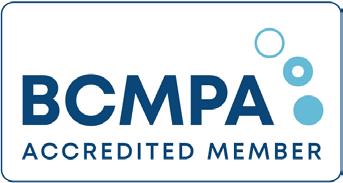


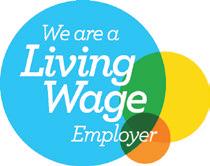

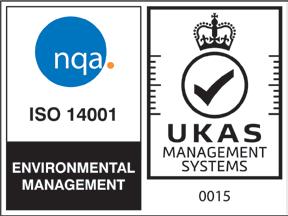


environments into the national curriculum alongside other health and environmental measures including energy, sustainability, healthy eating and physical activity”.
Dr Henry Burridge, senior lecturer at Imperial College London and contributing author to the CMO report said: “Professor Witty’s report emphasises the importance of indoor air quality, and schools are somewhere that our young people spend a large portion of their time – their exposure to air pollution in and around schools, and the understanding that they gain about air pollution from their learning at school, are important for determining the impacts of air pollution on our next generation.”
The CMO report showcases several studies in the UK that are being implemented to help reduce air pollution and improve children’s health. These programmes support measures, such as the installation of green screens and air filtration systems, the implementation of ‘school streets’ to restrict car access outside the school gates, building equipment upgrades and behaviour change campaigns, which have all helped reduce emissions from schools and children’s exposure to air pollution. While all these contributions are a significant defence in our fight against air pollution, they could be viewed as a band aid approach to a global problem that should be being dealt with through government legislation. Professor Prashant Kumar, founding director of the Global Centre for Clean Air Research (GCARE) and contributing TAPAS researcher says: “The best way to limit the exposure to children is to control the air pollutant emissions at the source.”
Professor Kumar goes on to say that “once pollutants are released into the environment, different types of interventions such as those described in the CMO report become important.” The GCARE team have tested many of these interventions in real-world situations. Prof Kumar suggests that “a mix of interventions could be a way to maximise their benefits”.
To reduce air pollution in and around schools, many different organisations will need to come together to work collaboratively and take responsibility for providing clean air.
Larissa Lockwood, TAPAS co-investigator and director of Clean Air at Global Action Plan, is leading the call for a national clean air strategy for schools. She said: “Air pollution can damage children’s health and ability to

learn. What is clear from the CMO’s Annual Report and the work of the TAPAS Network is that solutions to reducing air pollution in and around schools do exist. Unfortunately, no one is taking responsibility to help schools implement these solutions. It is therefore crucial that a national clean air strategy sets out a focused route to improve the air our children breathe when at school.”
A vision of the TAPAS network is for schools to be empowered to reduce their own exposure to pollution. By giving staff, students and parents the correct tools and knowledge, we can equip them to tackle air pollution in and around their schools. By bringing together air pollution experts, healthcare professionals, engineers, campaigners, policy makers, teachers, parents and most importantly children, we can pave the way for a healthier, cleaner future and inspire the next generation of young minds. L
About the author
Dr Katherine Roberts is the network manager for the ‘Tackling Air Pollution at Schools’ (TAPAS) Network based at the University of Cambridge. She also works part time as a Research Associate at Imperial College London for the SAMHE project (Schools’ Air Quality Monitoring for Health and Education) and the ‘Future Urban Ventilation Network’. Dr Roberts is a chartered building services engineer with over eight years’ experience working as part of an environmental physics team for a global engineering consultancy firm.
The Schools’ Air quality Monitoring for Health and Education (SAMHE) project is being launched this week, with organisers inviting UK schools to register to take part.
SAMHE (pronounced ‘Sammy’) is an exciting new citizen science project which brings together scientists, pupils and teachers across the UK. Poor air quality impacts pupils’ health and attention levels, so it is important it is monitored and understood.
Schools taking part will receive a free air quality monitor linked to an interactive Web App.
The SAMHE monitor measures carbon dioxide (CO2), total volatile organic compounds (TVOCs), particulate matter (PM), temperature and relative humidity. Through the SAMHE web app, teachers and pupils can view the data in a range of interactive charts and graphical formats, and see how air quality changes over the course of hours, days or weeks and months. The app also offers a range of curriculum-linked activities and experiments using the data, creating opportunities for pupils to be scientists and do hands-on experiments with their monitor.
SAMHE has been designed together with schools to ensure it meets schools’ needs and is fun and engaging for pupils. Teachers involved in its development found it “powerful to see the live feed of the data” and were pleased that the “range of options allows us to use this system across the STEM subjects”.
SAMHE enables pupils to interact with real world data about their immediate environment, gives them agency to take informed action and offers an opportunity to collaborate with scientists and contribute to important research.
A representative from Elangeni School, a SAMHE Pioneer School, said: “The SAMHE monitor and app have provided our Y4/5 science group with a wealth of data to interrogate and analyse. There is tangible excitement at being able to access the data in real time at home!”
Find out more and register your school for the project on the SAMHE website.
A vision for the TAPAS network is for schools to be empowered to reduce their own exposure to pollution. By giving staff, students and parents the correct tools and knowledge, we can equip them to tackle air pollution in and around their schools

✔ We are an established folding partition manufacturer
✔ We are an established folding partition manufacturer
✔ A long standing history with an experienced team
✔ We are an established folding partition manufacturer
✔ A long standing history with an experienced team
✔ Space management solutions for all
We are an established folding partition manufacturer

✔ Space management solutions for all
A long standing history with an experienced team
✔ A long standing history with an experienced team
Get in touch for a free quote now: Tel: 01373 454577
Space management solutions for all

✔ Space management solutions for all

Get in touch for a free quote now: Tel: 01373 454577
Get in touch for a free quote now: Tel: 01373 454577
Email: sales@buildingadditions.co.uk | www.buildingadditions.co.uk
Email: sales@buildingadditions.co.uk | www.buildingadditions.co.uk
Email: sales@buildingadditions.co.uk | www.buildingadditions.co.uk
Get in touch for a free quote now: Tel: 01373 454577
Email: sales@buildingadditions.co.uk | www.buildingadditions.co.uk

Schools built under the School Rebuilding Programme are to be net-zero in operation and resilient to climate risks. So what does this mean? And what can we learn from the first net-zero school to be completed under the programme?
The government’s school rebuilding programme (SRP) carries out major rebuilding and refurbishment projects at school and sixth-form college buildings across England, with buildings prioritised according to their condition.

Launched in 2020, the scheme aims for 500 schools to benefit from the programme over the decade.
In December 2022, it was announced that 239 new school buildings schools and sixth forms will benefit from renovation projects.
The new projects build on the 161 that had previously been announced, with construction works now nearing completion on the most advanced sites.
It means in total 400 out of the 500 schools and sixth forms have now been selected for rebuilds.
What schools get prioritised?
Schools are prioritised if they have buildings of specific construction types that require replacement, or if their buildings have the highest condition need, identified in data
collected in the Condition Data Collection (CDC). Schools are also prioritised if their buildings have severe and urgent condition need or if their buildings have risks that have the potential to cause significant harm to pupils and staff.
The 300 schools prioritised in 2022 were identified from 1,105 nominations received in early 2022, from organisations responsible for school estates. Assessment and site visits took place in spring and summer 2022 to identify those schools with the greatest need for a rebuild or significant refurbishment.
What will be different?
All projects in the School Rebuilding Programme are built to the latest construction standards, resilient to climate risks, netzero in operation, and include modern facilities.
The DfE’s sustainability strategy for schools wants young people to learn in buildings designed for net zero and says that “seeing sustainability brought to life in the buildings around them will allow children and young people to gain experiences which will enhance and contextualise their learning.”
The strategy says that adapting existing buildings and designing new ones to respond to climate change and reduce emissions will undoubtedly be a significant challenge. For new buildings, such as those selected, through the School Rebuilding Programme, specifications will set out low-carbon, climate-resilient standards – such as the installation of heat pumps for energy efficiency. For existing buildings, the challenge will be greater and the DfE will need to get a better understanding of the scale of the problem When designing net zero buildings, the World Green Build E
projectsAllin the school programmerebuilding are built to the latest construction standards, resilient to climate risks, and net-zero in operation

Council says that a whole life carbon approach should be taken, which addresses emissions from operational energy use in buildings, and the embodied carbon which comes from the building materials and construction or renovation processes. Energy efficiency must be a top priority, and the energy used should come from renewable sources.
What’s more, any remaining carbon should be offset using a recognised offsetting framework, and the amount of offsets used should be publicly disclosed.
The DfE also wants schools to be resilient and adaptable to the risks caused by climate change. The three highest priority risk areas identified in the Climate Change Committee Independent Assessment of UK Climate Risk were increased heat risk, flood risk, and water scarcity.
To this effect, the DfE aims to align strategic action with the Environment Agency’s National Flood and Coastal Erosion Risk Management Strategy to ensure education settings are ready for, and resilient to, flooding and coastal change.
The first net zero school
Littleborough Community Primary School in Rochdale, Greater Manchester, is the first net zero school completed under from the School Rebuilding Programme.
The project provides 14 new classrooms, a library, a new sports/assembly hall, Multi Use Games Area (MUGA) and a 420-place primary school providing 60 places for each year group along with a 26-place nursery.
Procured through the DfE’s Modern Methods of Construction framework, the school’s design from architects Wates maximises sustainability and ensures the building is Net Zero Carbon in Operation (NZCiO). This includes an optimised thermal envelope with increased insulation and large, triple glazed windows to maximise daylight together with rooflights and lightwells, enhanced ventilation and Photovoltaic solar panels. Construction started in September 2021 with all works carried out while the existing school was still in operation.
The project was celebrated with an event attended by delegates from across the delivery partnership, Rochdale Borough Council and the DfE.
Sarah Cooke, regional director for the Northwest at Wates, said: “Littleborough represents a step change in how schools are built, designed to not only provide brilliant, state-of-the-art learning facilities for pupils, but for the long-term benefit of the wider environment.”
Baroness Barran, Parliamentary UnderSecretary of State for the School System and Student Finance, said: “We’re thrilled to be celebrating the opening of the new net zero building at Littleborough Primary, a £10m School Rebuilding Project that started in Sept 2021 and will mean 14 new classrooms, a library, a new sports hall and multi-use games area for the children and families in this area.
“This is the first entirely new building to have been completed and opened as part of the Government’s Schools Rebuilding Programme, which will see 500 schools across the country benefit from new and renovated energy efficient school buildings that local communities can be proud of.”
Louise Woodman, head teacher at Littleborough Community Primary School, said: “We are delighted with our new building and it completes the improvement programme that has been taking place for a couple of years.

“The children absolutely love the modern facilities and can’t wait to be
in the new classrooms and use the new library and multi-use games area.”
“Councillor Rachel Massey, Rochdale Borough Council’s cabinet member for children’s services and education, added: “We are immensely proud that the borough of Rochdale is leading the way in this national programme and Littleborough Community Primary School is the first Net Zero school to be completed as part of the rebuilding programme.
“What’s most important is the new environment provides our children with the best possible environment for learning and it is also a real asset to the local community.”
Littleborough is the first project to be completed as part of the initial tranche of Net Zero schools in the DfE’s School Rebuilding Programme, which will see Wates delivering an additional two projects at Lytham St Annes High School and Whitworth Community High School. Wates also recently completed its first project procured through the MMC framework, Edgar Wood Academy, in Middleton.
Projects in progress
Wates is also working on Lytham St Annes High School and Whitworth Community High School as part of the Schools Rebuilding Programme.
Lytham St Annes High School in Lancashire will have a new two-storey main school block and detached sports hall. All new build elements will be net-zero carbon in operation, achieved through a combination of enhanced building fabric, passive ventilation chimneys, mechanical heat recovery systems and on site offsetting of energy use through an extensive biosolar roof system.
Whitworth Community High School in Lancashire will have a new 750-place secondary school, comprising of a two and three-storey main teaching block with classrooms, main hall, and specialist technology spaces. A minimum of 70 per cent of the building’s PMV (pre-manufactured value) will be constructed using offsite manufacturing techniques, while other sustainable aspects of the build will feature roof-mounted photovoltaics, biosolar green roofs, heat recovery systems, sustainable drainage systems, offsite engineered thermal envelope and electrical car charging points. L
Littleborough
in Rochdale, Greater Manchester, is the first net zero school completed under from the School Rebuilding Programme. The school’s design maximises sustainability and ensures the building is Net Zero Carbon in Operation (NZCiO).
There was a time when school cleaning was a side task that fell alongside preparing food or supervising break times. Sometimes it was simply a matter of running a mop around at the end of the day. It certainly never touched the leadership agenda.
There was a time when school cleaning was a side task that fell alongside preparing food or supervising break times. Sometimes it was simply a matter of running a mop around at the end of the day. It certainly never touched the leadership agenda.
However, since Covid19, school cleaning has been a priority. But school leaders aren’t necessarily experienced in managing cleaning and have other priorities.
However, since Covid19, school cleaning has been a priority. But school leaders aren’t necessarily experienced in managing cleaning and have other priorities.
With over 30 years’ experience of cleaning schools, Nviro has the knowledge and experience to help schools to manage their cleaning effectively to keep buildings clean, hygienic and safe to enable their students to thrive.
With over 30 years’ experience of cleaning schools, Nviro has the knowledge and experience to help schools to manage their cleaning effectively to keep buildings clean, hygienic and safe to enable their students to thrive.
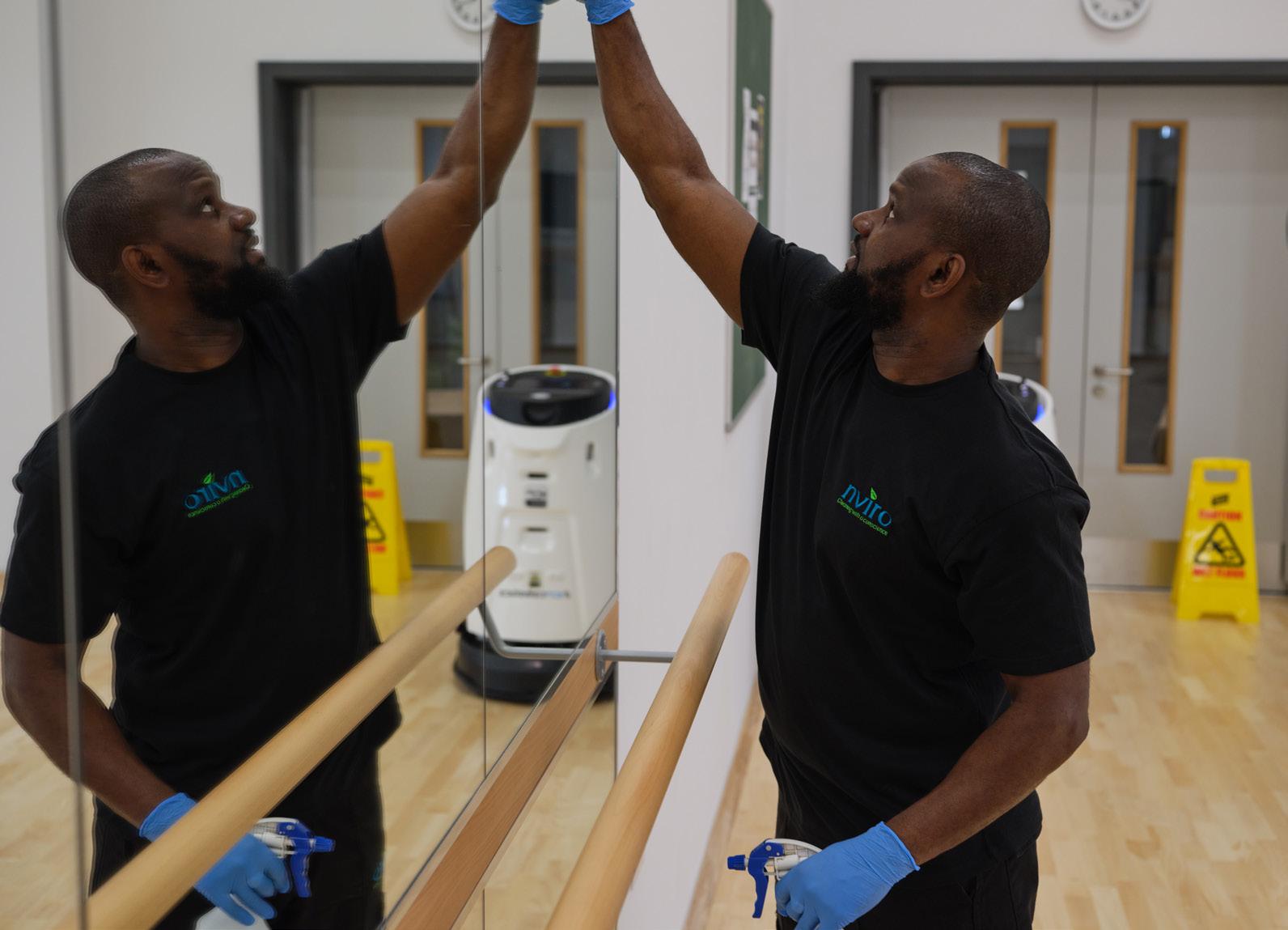
For us, when people are truly thriving in an environment, they are able to focus, without any distractions, doubts or fears. From a cleaning perspective, this is made possible by ensuring that everybody who uses your space can tell that it’s clean, see proof that it’s hygienic and feel that it’s safe.
For us, when people are truly thriving in an environment, they are able to focus, without any distractions, doubts or fears. From a cleaning perspective, this is made possible by ensuring that everybody who uses your space can tell that it’s clean, see proof that it’s hygienic and feel that it’s safe.
It’s hard to teach and learn in a space that’s dirty. It’s impossible to do so in an environment that actually damages your health. And feeling unsafe has a direct impact on a person’s ability to think
It’s hard to teach and learn in a space that’s dirty. It’s impossible to do so in an environment that actually damages your health. And feeling unsafe has a direct impact on a person’s ability to think
clearly, to focus and achieve. This is why school leaders need to continue to focus on the foundations of cleaning, hygiene and their impact on actual and psychological safety.
clearly, to focus and achieve. This is why school leaders need to continue to focus on the foundations of cleaning, hygiene and their impact on actual and psychological safety.
Cleanliness is a sensory experience: we see it, smell it and touch it. A lack of cleanliness might manifest in a smear on a window, a rancid smell from the toilet facilities, or a sticky substance on the underside of a seat. It’s reasonably easy to check that an environment is clean –after all that’s what you pay for. But is it enough?
Cleanliness is a sensory experience: we see it, smell it and touch it. A lack of cleanliness might manifest in a smear on a window, a rancid smell from the toilet facilities, or a sticky substance on the underside of a seat. It’s reasonably easy to check that an environment is clean –after all that’s what you pay for. But is it enough?
Hygiene can’t be seen; it has to be proven. Unlike cleanliness, you can’t make instant judgments about the hygiene status of a space - that is, the presence of bacteria, viruses or pathogens.
Hygiene can’t be seen; it has to be proven. Unlike cleanliness, you can’t make instant judgments about the hygiene status of a space - that is, the presence of bacteria, viruses or pathogens.
If you see a surface that appears unclean, you might assume the surface is unhygienic, but that doesn’t mean a clean surface is always hygienic. This is the lesson that the Covid19 pandemic brought into such sharp focus. And from this we’ve learned that hygiene practices reduce illness and absence and mean your building users will be in school more often.
If you see a surface that appears unclean, you might assume the surface is unhygienic, but that doesn’t mean a clean surface is always hygienic. This is the lesson that the Covid19 pandemic brought into such sharp focus. And from this we’ve learned that hygiene practices reduce illness and absence and mean your building users will be in school more often.
Safety is something we feel. It’s the absence of fear and anxiety. Reducing anxiety is an important focus for all school leaders given the myriad of issues facing our young people. You need to be concerned with both the physical and psychological safety of your building to foster feelings of safety. Communicating the steps taken and evidencing a clean environment helps people to know they are cared for.
Safety is something we feel. It’s the absence of fear and anxiety. Reducing anxiety is an important focus for all school leaders given the myriad of issues facing our young people. You need to be concerned with both the physical and psychological safety of your building to foster feelings of safety. Communicating the steps taken and evidencing a clean environment helps people to know they are cared for.
How can you create an environment that supports students to thrive?
How can you create an environment that supports students to thrive?
To effectively deliver clean working environments, you need to be willing to enter into a collaborative and cooperative partnership with your cleaning provider.
To effectively deliver clean working environments, you need to be willing to enter into a collaborative and cooperative partnership with your cleaning provider.
While the cleaning and support team will provide the service needed to create a clean environment, here’s our top tips for creating a thriving environment.
While the cleaning and support team will provide the service needed to create a clean environment, here’s our top tips for creating a thriving environment.
Cleaners are often prevented from creating a clean environment in schools because they need to work around mess or disorder. Anyone who has hired cleaners for their home will know that tidying before they arrive means they can spend more time actually cleaning, rather than putting things away. The same is true in a school.
Cleaners are often prevented from creating a clean environment in schools because they need to work around mess or disorder. Anyone who has hired cleaners for their home will know that tidying before they arrive means they can spend more time actually cleaning, rather than putting things away. The same is true in a school.
Are you doing everything you can to create environments where students can truly thrive and fulfil their potential?
3. Implement an on-going hygiene solution
Every school will have seen the dip in results and morale caused by an outbreak of flu across a year group, or a bout of norovirus that seemed to continue for weeks as it bounced from one person to another. Addressing hygiene regularly can stop that impact.
Many of the hygiene approaches developed or accelerated during the pandemic, like air filtration, antibacterial sprays, protective coatings and swab testing, can now be extended to provide protection on an ongoing basis.
4. Use a specialist partner
allay the very real fears that people had. Stress and anxiety are a huge problem in a school environment and, while you cannot get rid of them entirely, the fear of illness is one contributor over which you as a school leader have some influence. If anyone in your building feels unsure that the building is hygienic, their stress and anxiety may spike.
A staffroom table littered with dirty mugs is not as easy to wipe down as one that has been cleared beforehand. Likewise, if pupils stack the chairs in their classroom at the end of the day, it allows cleaners to mop a floor far more efficiently.
To create clean working environments,
To create clean working environments, you need to be willing to enter into a collaborative and cooperative partnership with your cleaning provider. You can get much more value from a cleaning team if each room is ready for them and they are able to concentrate their efforts on cleaning, not moving furniture.
2. Prepare for the inevitable
Allowing a budget for non-standard cleaning tasks is another overlooked area in creating a clean environment. When cost is the primary procurement criteria, tasks we see as core to cleanliness are often descoped. This might include chewing gum removal and an upholstery refresh ahead of a parents’ evening.
Similarly, we advise you to make allowance for ad hoc cleaning tasks that inevitably crop up. It’s very rare to travel an academic year without an incident of graffiti or unattractive staining that needs attention. Less common but by no means unknown are those incidents that need urgent and specialist attention, like a chemical or bodily fluids spillage.
Hygiene solutions inevitably stretch an already tight budget. But they can cost more. One solution is to work with a partner that provides both cleaning and hygiene services, so you can minimise the cost by balancing both.

5. Optimise your budget
can
We’ve worked hard with our clients to find ways of automating many routine cleaning tasks so that a portion of the budget can be redirected to hygiene services. Where this is possible, you will see all the benefits with a net neutral impact on the budget.
6. Communicate safety
During the height of the pandemic, it was not enough to take hygiene measures –you also had to be seen to be doing it, to
A key part of your duty of care, therefore, is to not only keep your school hygienic but communicate the measures you are taking around hygiene.
7. Ensure respect and familiarity
Another factor in engendering a feeling of safety is the manner and professionalism of your cleaning teams. For example, a lone teacher encountering a person in the building after school hours needs to be able to immediately identify who they are and their purpose for being there. Equally, a pupil shouldn’t overhear bad language from cleaners or be made to feel uncomfortable. If you want your building users to feel safe, uniforms and a good standard of behaviour from your cleaning team are key.
a your and
For more information about how you could use Nviro’s Clean, Hygienic and Safe Framework to support your students to focus on learning, visit www.nviro.co.uk


EdTech can save schools time and money whilst transforming teaching and learning. But it takes time to get it right. Al Kingsley, chair of Hampton Academies Trust, explores the importance of aligning EdTech purchasing with a schools’ unique needs and how to ensure that schools get the most out of their investment
Choosing, implementing and using an EdTech product is an investment of time and money –two resources of growing scarcity in schools. The right “evidence informed” product can save teachers hours of work and deliver excellent outcomes for students, but the wrong product, however, can generate frustration for both staff and students, exacerbate inefficiencies and be a poor investment of already stretched school budgets.
While the benefits of implementing the right EdTech solutions can positively impact student outcomes and wellbeing whilst also possibly saving schools time and money, many education institutions struggle to afford the initial investment of both resources needed to find the technologies that will work best for them. Chopping and changing EdTech platforms many times over is simply not a luxury many schools can afford.
Careful, regular planning and evaluation of your school’s digital needs, as well as collaboration with your school’s staff and a wider community of peers can help ensure the EdTech is maximising any return on investment.

Taking the time to identify the exact needs of the school community is a vital first step in ensuring the successful adoption of any EdTech product. EdTech solutions are not one-size-fits-all; not every product is going to solve every school’s problems. The creation of any digital strategy in a school should have the school’s specific needs at its heart.
Having staff input at this stage is crucial; ensuring that they are involved in the process of selecting the EdTech product by allowing them to voice their priorities, concerns and areas in which they need support boosts the likelihood that you will choose the right product in the first instance. This will help to avert a situation in which staff feel that the product is being forced on them, as
opposed to it being a tool at their disposal. If one of the primary purposes (alongside the core impact on learners) of adopting an EdTech product is to reduce the burden on school staff, it’s necessary to ensure that the chosen product will deliver solutions that will truly improve their day-to-day teaching tasks. For instance, if teachers have flagged a need for greater support with targeted student interventions, a classroom management system which can be used to more easily track student attainment, and therefore highlight where a student may be struggling, would be best suited to meet these needs.

Teacher buy-in is an essential factor that must be considered and can be achieved by including educators in the process from the start. This prevents there being a mismatch between teachers’ attitudes towards the solution and therefore the use of the solution. Staff and students can potentially have uneven experiences of the use of the same technology even within one school. This lays bare the importance of proper and continuous CPD following the introduction of a new EdTech product – and not simply in terms of ability and functionality, but
to cooperate with teachers and discuss the product’s intended use and outcomes is an essential part of laying the groundwork for successful use of EdTech products. Adopting a highly sophisticated technological solution is not always necessary; services are available which directly address specific needs. Of course, maintaining a lean, targeted approach in the selection of EdTech solutions in this way will also save money; avoiding paying for services which your staff are unlikely to use, as well as ensuring to consider solutions that meet more than one of the needs, will guarantee the investment of money and time will allow the schools to reap the benefits of EdTech in an efficient way. E
EdTech platforms many times over is simply not a luxury many schools can afford



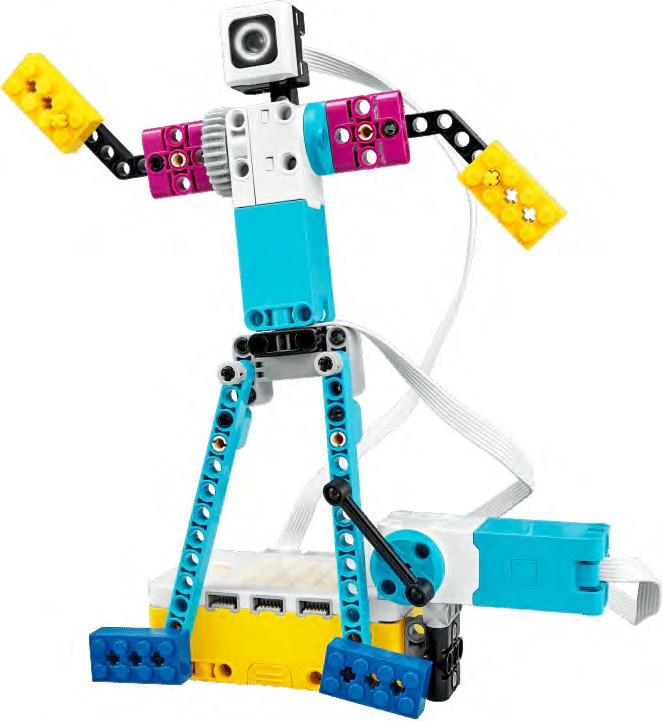

Tech audits are crucial in establishing whether the EdTech currently in use at your school is delivering the expected solutions, and whether it is in line with your digital strategy. Regularly taking the time to assess your assets and products in use will reduce the likelihood of purchasing any additional unnecessary equipment or paying for subscriptions which are going unused. The audit also serves as an opportunity to evaluate whether the service you are paying for is of adequate value and providing an acceptable return.
It is important, once again to ensure that staff are using EdTech solutions in an effective and efficient way. Gathering feedback from staff and students can be one helpful way of flagging potential issues with the use of technology, and any areas of improvement going forward. This will help to ensure that EdTech is not encumbering staff with extra work, and is in fact saving time for them. It can also signal potential CPD opportunities for staff.
If, following an audit of tech assets and subscriptions, you find that you are significantly overspending or your solutions are not adequately meeting your needs, the next step is exploring alternatives. Independent evaluations of EdTech products are available from organisations such as Education Alliance Finland and the EDUCATE programme from UCL Institute of Education. These bodies provide product analysis from an educator’s perspective, and can be a useful tool.
It is always worth communicating with providers to determine whether you can customise your package of services to solely what is necessary and most aligned with your digital strategy. As with any service provider, discussing potential discounts is never a bad idea – particularly on the basis of loyalty if you have been using the service for a long time, or perhaps establishing whether a trust-wide discount could be possible if multiple academies within your trust are interested in a product. Reaching out to your community of peers can also help to gather information and share recommendations for particularly useful products. Many trusts already do this in the form of ‘tech clubs’, but online forums and EdTech conferences can also be fruitful in this regard. Whilst good EdTech can certainly provide boundless opportunities to support improving education outcomes, transform the learning and teaching experience and even cut costs for schools, the time and effort required to make the investment
worthwhile must be acknowledged particularly as the education sector is currently so time poor. It would be foolish to presume that the mere fact of paying for a product will lead to improvements and in the current pressured climate, any decision to implement a new EdTech solution must be carefully researched in advance to ensure that it will be in keeping with your school’s digital strategy and the needs of your staff. Decisions and purchases should be made with the long-term view wherever possible and it is essential to communicate that effort to undertake useful but time-consuming steps like audits and feedback gathering will be crucial in determining the value that an EdTech solution can bring if only the right one is implemented in the right way. L
 Al Kingsley is chair of Hampton Academies Trust and Group CEO of NetSupport
Al Kingsley is chair of Hampton Academies Trust and Group CEO of NetSupport
FURTHER INFORMATION
www.netsupportsoftware.com
www.hamptonacademiestrust.org.uk

Careful planning and evaluation of your school’s digital needs, as well as collaboration with your school’s staff and community, can help ensure that EdTech is maximising any return on investment

Philips displays from PPDS bring education settings to life. In the classroom or lecture theatre, for the back office and around campus.
Networked or standalone, interactive touchscreens or static signage - with the total solution approach from PPDS, the display is just the beginning. Harness the power of familiar software, augmented with additional education features and functionality.
Whether you need to enhance collaboration, to engage students on site or at home, or to inform the whole campus community, move confidently into the future with Philips professional displays.


From classrooms to canteens – identifying and adopting energy efficient, remotely managed interactive classroom displays and campus-wide digital signage can help ease financial pressures, enhancing efficiencies for smarter, more sustainable teaching and learning

Today, perhaps more than ever, every penny counts, and every investment is scrutinised. With the growing role of technology in education – both for driving more engaging learning experiences in and out of the classroom, as well as preparing students for the digital workplace – the stakes couldn’t be higher. A poor buying decision could have detrimental impacts on performance for both tutors and students alike.
As an education AV/IT manager or decisionmaker, you already know of the various considerations required when selecting and buying digital displays, depending on where they will be used, how, and by whom.
Is the screen big enough to be seen clearly at the back of a learning space? Is the pixel pitch sufficient for viewing content close-up? Is the user experience intuitive enough that teachers and their students feel confident with the technology at hand?
All remain fundamental decisions in creating the desired teaching, learning and communications experience, whether for a handful or hundreds of displays across a single campus or multiple sites. But the market and considerations have changed.
With a growing focus on sustainability, coupled with the escalating pressures of rising utility costs, energy efficiency of displays and the running costs associated with them
are becoming increasingly critical factors. Even with various recent government interventions and price caps, short-term outlook and future unpredictability are far from reassuring. Managing costs and a clear ROI have never been more in-focus. The need for digital displays, whether a creative and eye-catching videowall in reception, or digital signage and interactive displays in classrooms, canteens, corridors and sports halls/stadiums, have not changed. Going backwards is not an option. To reduce the financial burden, though, we now need to take a more strategic approach, taking several factors into account...
The first is to gain a better understanding around the energy efficiency of the product itself. Latest European regulations ensure greater clarity around energy efficiency of electronic displays, supporting more educated buying decisions. Meanwhile, the updated rating structure gives manufacturers greater scope for energy efficiency enhancements and the vision to break boundaries, differentiating with more power-conscious products. Watch this space! The difference in running costs between G- and F-rated appliances can be substantial, with no impact on desired outcomes. Reducing the use of older, less efficient equipment is worth considering for the long-term.
It’s currently estimated that up to 25% of products in the market do not comply with the previous energy efficiency labelling regulations, with around 10% of potential energy savings lost due to non-compliance.
It may seem obvious, but if nobody’s looking at a display, it should be powered down or switched off. Easier said than done in a busy education environment. Or is it? Philips professional displays can be managed remotely, including content, troubleshooting, and (important for energy management) brightness and power, via the PPDS Wave platform. This can also extend display lifetimes, resulting in lower maintenance costs and less frequent need to invest in replacements. The savings soon add up.

Finally, it’s important to choose the right technology. Does the environment really
warrant or benefit from 4K? Is LED or LCD the way forward?
Direct view LED displays, when comparing like-for-like sizes, can consume less energy than their LCD counterparts. So, replacing old LCDs with dvLED displays could be an immediate cost saver. Philips dvLED displays are designed to deliver proven low energy consumption – between 20%, and in some instances, as much as 50%, when compared to similar products on the market, without compromising on performance. dvLED displays are also modular, allowing for partial replacements for faulty sections, helping to lengthen the product lifespan, too.
It’s important to base buying decisions on the business case - on what exactly the display is needed for. Again, it seems obvious, but we have seen numerous incidents where customers have invested in displays that deliver (and are priced to include) far greater capabilities than will ever be required. Philips Tableaux, the world’s first Advanced Colour (60,000, including blue) ePaper introduced by a global display manufacturer, provide vivid 24/7 static content while running on zero power. Yes, zero power. For environments where digital signage is desired, either replacing wasteful paper communications or where content on existing digital signage does not need to be dynamic (movies), Philips Tableaux is a game-changing alternative. What’s more, requiring no physical power source, displays can be easily located and relocated for use in almost any indoor location – from the classroom for information, through the corridors for wayfinding to the canteen for menu boards. Food for thought! L
During 2022, we saw the introduction of the DfE digital and technology standards for schools and colleges for connectivity and cyber security as well as updates to KCSiE requirements. So what were the updates? And how can you meet these standards in your school?
Endpoint Protection as part of the Protect & Connect® package. The software prevents malware and ransomware that leverage known and unknown vulnerabilities.
Router for Life
With our fully managed RFL (Router For Life) solution, your firmware is always up-to-date and if your device breaks - even after the warranty ends - it will be replaced free of charge.
The new broadband internet standards state schools should: Use a full fibre connection; Primary schools should have a minimum 100Mbps download speed and 30Mbps upload speed; and Secondary schools, colleges and all-through schools should have a connection with the capacity to deliver 1Gbps download and upload speed. Schools should have a resilient connection with a combination of appropriate systems: Back-up connectivity; multiple routers, capable of automatic failover; and alternative power sources for core active equipment
KCSiE Guidelines
KCSiE guidelines state that schools should have appropriate filtering and monitoring in place, with regular reviews of their effectiveness. Your safeguarding software should be informed in part on the risk assessment required by the Prevent Duty and still allow access to appropriate educational content for their age.
The latest update to the DfE’s digital and technology standards for schools laid out new requirements for cyber security. To meet this standard schools must: Protect every device with a correctly configured boundary, or software firewall; keep firewall firmware up to date; and use anti-malware software to protect all devices in the network, including cloud-based networks
A single, compliant package
We’ve provided schools with reliable internet services for almost 20 years. Combining connectivity with safeguarding and security, our Protect & Connect® makes management and admin easier while ensuring compliance with DfE and KCSiE guidelines.
The package offers a full range of futureproof, full fibre internet connections to suit any school’s needs - from FTTP to 1Gbps ultrafast
leased lines, Exa’s network is completely uncongested, ensuring you receive the full bandwidth you pay for at all times.
At Exa, we believe schools shouldn’t have to worry about whether their online safeguarding solutions will meet KCSiE standards. That’s why we have a team of skilled developers on site to update our SurfProtect content filtering platform. It’s included in our Protect & Connect® package, along with Securus monitoring. When used together, these solutions fulfil KCSiE filtering and monitoring requirements.
Firewalls
Protect & Connect® customers are also protected by Fortinet’s next generation FortiGate firewalls. Choose from a physical device, or a fully managed virtual machine (VM) that ensures you always have up-to-date security.
Antivirus
Antivirus is an essential part of cyber security and schools need to know theirs is up to the job. We can provide Panda
The Exa Foundation

The Exa Foundation provides workshops to educate young people on computing and inspire them to consider a career in tech. Sessions are linked to UK National Curriculum requirements, and can be adapted for a staff CPD programme. Sessions cost £1,000 per day, but for Exa connectivity customers they’re included as part of their package.
How can Exa help?
These new requirements are set out to protect pupils in school, while allowing them the freedom to learn in a safe environment. We want to make it as easy as possible for schools to ensure they are compliant with the DfE guidance. Protect & Connect® can relieve the burden on your staff by having a single supplier for your internet services.
FURTHER INFORMATION
If you’d like to discuss how the Protect & Connect® bundle can help keep your school compliant, email us at sales@exa.net.uk
With many schools lacking female students in computing subjects, student Ahana Chibber speaks to BCS, the Chartered Institute for IT, about her experience of studying Computer Science A Level, and being the only girl in the year group to do so
Ahana Chibber is a Y12 student at Dr Challoner’s Grammar School in Amersham, Buckinghamshire, where she’s studying A Levels in Computer Science (CS), Maths, Further Maths and History A levels.
She’s particularly interested in Computer Science and the fascinating world of IT, and told BCS, The Chartered Institute for IT, about her aspirations and what it’s like being the only girl in a year group of 200 to study Computer Science.
What attracted you to studying Computer Science?
When I was choosing my GCSE options in Y9 I was drawn to Computer Science because of how much everyone was talking about how computing is the future. I wanted to see what this was all about. Also, around this age I was introduced to social media and thought it would be fascinating to find out how the apps which I was spending so much time on, actually worked. In addition, at that point I had a little bit of experience of coding programming in various languages and I found the problemsolving aspect of coding quite appealing.
What have been the highlights so far?
Getting in touch with BCS has been a big highlight! As the only girl doing CS in a year group of 200 students in sixth form, I reached out to BCS because I knew they were working hard to tackle the lack of female representation. I never imagined there would be so much enthusiasm to support me from BCS! I’m very excited about how this can help me in the future!
Recently I’ve undertaken an online work experience course in software development offered by Deloitte. This was a great experience for me as it was an opportunity to take part in the corporate aspects of computer science and in more professional projects. I’m also at a stage where I’m thinking about university and personal statement for my application, so have been trying to go beyond the A Level curriculum and immerse myself in books about computer science.
Any books or recommendations?
I’m currently reading a book Algorithms to Live By – the Computer Science of Human Decisions by Brian Christian and Tom Griffiths. It’s a very interesting book. It is not too technical, and it goes a bit deeper into how much computer science is involved in every aspect of our lives and every decision that we make. There is so much maths behind everything and it’s so interesting to see how that all works!
What’s it like being the only girl studying Computer Science?

I joined the sixth form from a girls’ school and I never imagined that I’d be the only girl in a big year group who was doing Computer Science. I walked into the classroom on the first day and it was full of boys. It was a little intimidating at first, I was waiting for another girl to walk in! But it hasn’t held me back and the people in my class are wonderful. But I do think it points to a bigger issue. I’m sure my school is not the only one with a lack of female representation. It made me think what can I do to tackle this, because, of course, we want more girls in the industry.
What are your aspirations for the future?
I am considering studying Computer Science at a University in in the UK. Thinking long term, I would be interested in travelling and living elsewhere and potentially pursuing a career in data science. I hopefully will get the chance to explore new cultures and meet new people.

Why is it important to make sure more girls study computer science?
It’s no secret that women throughout history have been hugely constrained and limited. Gender stereotypes are in place from birth so that girls are conditioned to pursue a certain path. While things are getting
better, the statistics show that in UK and US representation in engineering sectors is still as low as 10 per cent. It’s so important that this changes because this underrepresentation means that all of women’s discoveries, work, creativity and intellectual gifts are lost. Technology which is designed by scientists and engineers from diverse backgrounds can advance products and services for consumers who have diverse needs. There’s real life evidence of this bias such as AI technology used to hire people being biased against women, because the data had been developed by men.
Do you have any advice to girls looking to study Computer Science at GCSE or beyond?
Don’t be discouraged if you’re in the minority in lessons in school. By persevering you can be the role model to younger students and inspire them to take up Computer science. And as a general point, work experience and online courses are a great way to learn more about computer science and particularly for those considering a tech field for a career. It’s such a broad field with a such a wide range of different roles which really appeals to me. L
“I’m sure my school is not the only one with a lack of female representation in computer science. It made me think what can I do to tackle this, because, of course, we want more girls in the industry.”
This limited time offer provides access to the world’s No.1 interactive panel* and all the training, support, and resources that come with it.
Promethean will subsidise one ActivPanel 9 purchase for all customers in the United Kingdom and Ireland for orders placed between 29 March and 31 July 2023 as follows:


ActivPanel 9 / ActivPanel 9 Premium 65”
– up to 50% off SRP

ActivPanel 9 / ActivPanel 9 Premium 75”
– up to 60% off SRP

Subsidised pricing gives you the chance to put the ActivPanel 9 through its paces and experience all the value that comes from partnering with Promethean, including:
• ActivInspire software supplied as standard with no subscription fees
• Five-year on-site warranty
• Virtual ActivPanel orientation session with a Promethean consultant
• Access to a fully funded CPD programme through Learn Promethean

Bett 2023 was a hub for innovation, showcasing the latest education technology and hosting packed conference theatres led by inspiring figures and leading education professionals
Bett brought together over 30,000 educators, policy makers, EdTechs and industry changemakers from 123 countries to view the latest education technology and hear from inspirational speakers.

Connect @ Bett – the event’s meetings programme – also launched at incredible scale, hosting 7,000 meetings for 2,500 individuals from 1,500 organisations.
The Education Secretary Gillian Keegan used the event to launch a new set of technology standards for schools and colleges, to ensure schools have a safe, secure and reliable foundation in place before they use more powerful technology. The standards cover cloud technology, servers, storage, filtering and monitoring.
The education secretary also used Bett to launch the Department for Education’s official statement on the opportunities and risks that come with AI in education, and spoke of how artificial intelligence has the power to transform teachers’ day-to-day lives.
Gillian Keegan said: “AI will have the power to transform a teacher’s day-today work. We’ve seen people using it to
write lesson plans, and some interesting experiments around marking too.
“Can it do those things now, to the standard we need? No. Should the time it saves ever come at the cost of the quality produced by a skilled teacher? Absolutely not.
“But could we get to a point where the tasks that really drain teachers’ time are significantly reduced? I think we will.
Getting to that point is a journey we in this room are going to have to go on together – and just as we’ve responded to other innovations like the calculator, we’ll use it to deliver better outcomes for students.
The education secretary also spoke of how the DfE will launch a new digital service to help senior leaders with their technology planning. The tool will benchmark their technology against digital standards, suggest areas of improvement
and provide actionable steps and resources to implement these recommendations. The service will be piloted with schools in Blackpool and Portsmouth in September 2023 before being rolled out across the country.
There were a number of inspiration speakers at this year’s Bett show. Dragon’s Den star Steven Bartlett was interviewed by BBC presenter Amol Rajan about his journey from education to becoming an accomplished entrepreneur, as well as his work inspiring a new generation of entrepreneurs and creators from a BAME background, often from disadvantaged schools and communities.
Ex-prima ballerina and former Strictly Come Dancing Judge Dame Darcey Bussell DBE discussed how the arts E
The KeeganSecretaryEducationGillian used the event to launch a new set of standardstechnology for schoolscollegesand
Proudly supporting over 2,500 schools and 200 trusts, in more than 100 local authorities across the UK, you can rely on EPM to help you successfully navigate the education landscape.
As we celebrate 30 years of EPM we are reflecting on our journey so far and planning for our future. We’re thrilled to announce that EveryHR by IRIS will underpin our unrivalled service, bringing together best-in-class advice with market-leading technology - providing the all-encompassing education solution we know the market is crying out for. In addition to great technology, we provide specialist and proactive support, empowering you to stay one step ahead and feel supported, reassured and in control.
Jen Elliott CEO of EPM Ltd Resources Payroll & Pensions
Human
Resources Payroll & Pensions
Human
EPM will empower you to stay one step ahead
can be used to improve student and teacher wellbeing.
Bestselling author and co-host to the High Performance Podcast, Professor Damien Hughes, shared his insights on the most innovative and exciting approach to leadership. Professor Damian Hughes was appointed as a Professor of Organisational Psychology and Change for Manchester Metropolitan University in 2010 and is the co-host of The High Performance Podcast, an acclaimed series of interviews with elite performers from business, sport and the arts, exploring the psychology behind sustained high performance.
Computer scientist and CEO of Stemettes Anne-Marie Imafidon, MBE, also captivated audiences on her speech on getting women to study and pursue STEM careers. Since becoming one of Oxford University’s youngest graduates, Anne-Marie has worked across a range of industries and founded Stemettes, a social enterprise dedicated to bringing girls and young women to STEM subjects. She now hosts the Evening Standard’s Women Tech Charge podcast, and comments on technology, the changing nature of work, and the challenges both present to business and society. Anne-Marie has served on the board of DCMS’s Digital Skills Partnership and is a trustee for the Institute of the Future of Work.
Other inspiring speakers included Michael Rosen, who is one of Britain’s best loved writers and poets for children and adults. He spoke about how writing has helped him cope with difficult aspects of his life and the importance of getting children to write and love literature. He also presented the Kids Judge Bett event (see box out).
Sustainability is a key priority for education institutions, and the publication of the government’s Sustainability and Climate Change Strategy for the education sector has cemented the crucial role that schools play in meeting net zero objectives.
The Bett session ‘Leading a climate change and sustainability strategy’ featured
Forum for the Future’s CEO, Dr Sally Uren explored the massive transformation that education institutions need in order to hit the Department for Education goal of all schools, colleges and universities being carbon neutral by 2030. Dr Sally Uren is passionate about driving deep transformation in global systems and has spent more than 25 years working in partnership with business, governments, and civil society to accelerate the shift toward a just and regenerative future. In 2017, Sally was awarded an OBE for services to sustainability at the Queens New Year Honours.
There was a number of exciting and cutting edge technology products on show at Bett 2023.

DFRobot showcased its Lark Weather Station, which is a compact and portable device that provides real-time weather data wherever you are. It’s a great tool for students to learn about atmospheric conditions, including wind speed and direction, temperature, humidity, and pressure. At the Bett show, the Lark Weather Station was connected to a Unihiker, a userfriendly development computer that supports data charts on its LCD colour touchscreen. This setup allowed for easy tracking and storage of weather data over the long term. DFRobot also presented its Plant Monitor equipped with a SCI DAQ module, which is capable of monitoring the optimal growing conditions for plants, providing real-time data on the module display. Lenovo introduced its newest solution bundle for education, the Lenovo Chromebook Education Package for students and teachers. Now education institutions can obtain Google’s Chrome Education Upgrade, granting users access to the Google Admin Console for tech support and device management, alongside a choice of Lenovo solutions, including Lenovo NetFilter, LanSchool, Zero Touch Enrollment, CO2 Offset Services, and Lenovo Support Services. With this bundle, school IT teams can unlock the
capabilities of ChromeOS to more easily manage and protect device fleets. Students and visitors were also able to experience Lenovo’s Virtual Reality (VR) Classroom.
Samsung unveiled its new Samsung Interactive Display, named WAC, which expands the offerings beyond the Flip and Flip Pro models operating on Tizen OS by leveraging the Android OS to provide intuitive usability. The easy-to-use display helps teachers customise their home screen user interface, activate multiple screens, share up to nine displays at once regardless of OS or device, and utilise intelligent education apps to enrich student learning.
ASUS showcased its products which are designed to address the challenges that comes with hybrid learning. The ASUS lightweight, military-grade devices feature up-to-the-minute technology that supports the latest software and integrates with a range of digital tools, apps, and systems.
Asus has designed its Windows laptops and Chromebooks to be suitable for cloud-based learning and its laptops are cloud-compatible for the classroom as well. They’re designed to work seamlessly with third party apps and cloud services such as Google Workspace for Education and Microsoft Teams. This gives students and teachers easy access to resources such as apps, activities, lesson plans, games – and even virtual field trips.
Philips showcased its displays and monitors which allow for interactive teaching and better collaboration between students and teachers. Its Gaming monitors have an array of peakperformance features that deliver precise graphics and ultra-fast, low-latency game play that meet the needs of all gamers. Where education providers are now offering esports as part of the curriculum, specialised monitors are a key investment component. Philips also presented a range of displays for distance learning that come with 5mp webcam and USBC Docking for one cable connectivity.
Promethean meanwhile introduced the all-new ActivPanel with ActivSync E
technology which eliminates digital barriers between devices and enables increased connectivity, customisable settings, and enhanced mobility so that teachers can move around the classroom freely.
For device management in school, Powergistics Towers presented its Core Series which empowers students to manage their own devices while giving classroom space and time back to teachers.
Esports
Esports is more than just kids playing video games – learning through play has always been a tried-and-tested method in education. Specialist programmes engage with students and their hobbies and interests, as well as expanding the possibilities in SEN classrooms. It is capable of meeting students and their needs where the traditional learning system hasn’t been suitable.
Schools already utilising esports in the classroom have seen an increase in student morale, as well as the sharpening of essential soft skills not touched on by traditional education methods. The introduction of new ways to learn has also exposed students to new opportunities, some of whom may never have considered higher education until they explored the qualifications relevant to esports.
Esports @ Bett 2023 allowed audiences to view innovative content sessions from schools already on their esports journey, experience esports technology, and watch esports tournaments with students from across the UK.

British Esports ran an esports tournaments that saw seven Rocket League teams compete in a single-elimination live competition. There were also panel discussion by esports professionals which focused on how esports is making its impact in education. Speakers included Kylie Kendrick from Durham University, Callum Abbott from Endpoint Esports, and Sara Cornish from Minecraft Education.
The Bett Awards 2023, held in association with BESA, took place at The Brewery, London on 29 March 2023, rewarding 25
inspiring companies and recognising an additional highly commendable product. Among this year’s finalists were a range of innovative solution providers transforming experiences for students worldwide. From flexible learning platforms to interactive resources, these awards are the most effective way to recognise excellence in EdTech.
Knowledge AI – KAIT, was awarded in the Class Aid or Educator Support category for their innovative AI-driven platform that helps educators to understand exam data better. And, Lyfta, a platform that transports students and teachers to immersive 360° spaces across the globe, won the Transformational Impact award. Having amassed over 20 years of experience in education, this year’s Company of the Year (less than £3m) award went to CreativeHUT, which develops programs & activities by educators that focus on building confidence in STEAM and developing 21st-century skills. Other winners were focused on accessibility and assistive technology tools to identify language difficulties or stimulate student’s senses for a better learning experience.
OxEd and Assessment – LanguageScreen won the Early Years Digital Product or Service award and Inclusive Technology – Inclusive Stories won the SEND Resources, Products & Services award.
Louisa Hunter, Bett dåirector, said: “As technology continues to change the way we learn and teach, it is inspiring to see these trailblazers pave the way with EdTech solutions that are making a difference in schools and universities. The Bett Awards 2023 go beyond acknowledging the excellence of these technological advancements and also highlight their crucial role in upskilling educators and learners. The Bett Awards recognises the way that these innovative solutions and platforms are opening up a world of opportunity for the next generation – for them to become problem solvers, critical thinkers, and lifelong learners.” L
INFORMATION
uk.bettshow.com/welcome

Kids Judge Bett is a studentled event where children from different participating schools explore stands, exhibitors and products at Bett to find their favourite products.
Organised by Katy Potts from Islington Council in partnership with BESA (British Educational Suppliers Association), the chosen products are then announced during an awards ceremony at Bett’s Arena theatre.
This year’s winners were announced on Friday 31 March by the students themeselves, alongside poet Michael Rosen, where delicious chocolate trophies were given out to sixteen worthy winners who demonstrated innovation in several categories. This year there was a new focus on sustainability and climate change with the students selecting four winning companies in these categories.
The schools that took part were Alderton Junior School in Loughton; Beechwood Park in St Albans; Chiltern Learning Trust in Luton, Crosthwaite Primary in Cumbria; Galley Hill Primary School in Redcar; Kings Cross Academy in Camden; Leo Academy Trust in Sutton; Oakdale Juniors in Redbridge; St Edmunds School in Hindhead; St Mary Magdalene Academy in Islington; The Raglan Schools in Enfield; Wong Kam Fai Primary and Secondary School in Hong Kong; and Willow brook Primary in Leyton.
For a full list of winners, click here.
In today’s world, where education has shifted from classrooms to online learning due to the pandemic, having the right tools for e-learning and home-schooling is crucial. Philips offers monitors that are designed to meet the needs of the education sector, in a fun and engaging way
The wide range of Philips monitors is equipped with features that make learning more engaging and fun, using state-of-theart technologies such as OLED, QD-OLED panels, hi-res webcams with face recognition, noise-cancelling microphones, and more.
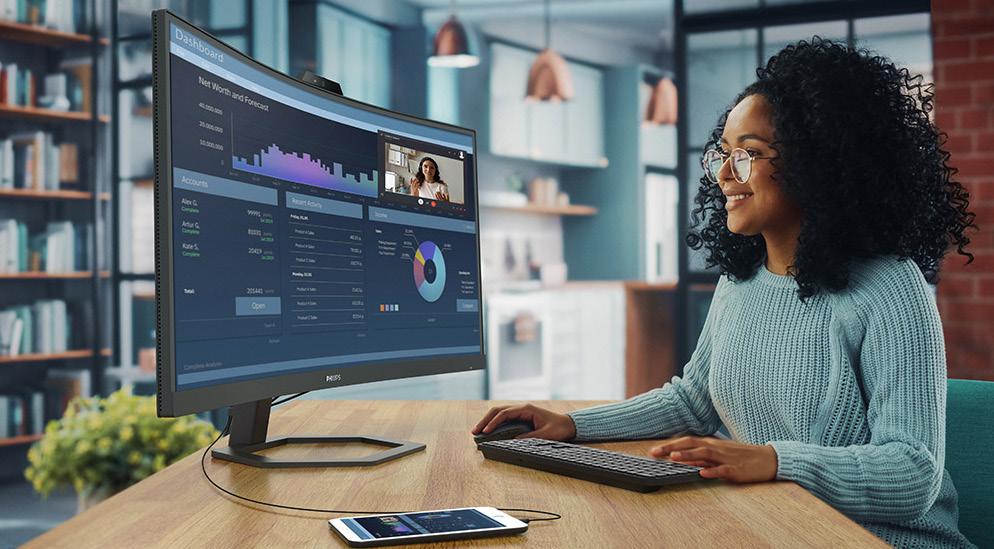
One of the latest models Philips monitors offers for schools and universities is the 34” curved ultrawide USB-C docking monitor 34B1U5600CH. It is fitted with an integrated 5 MP Windows HelloTM webcam and noise-cancelling mic to ensure clear communication with classmates and teachers. The monitor’s wide colour gamut and high-resolution (UWQHD) panel makes it a great tool to improve productivity, enabling users to show two applications side-by-side thanks to its wider aspect ratio (21:9). With the Windows Hello integration, several different users can log into their sessions on the same monitor simply by looking at the webcam - without the need to type in a password. This is a common set-up in a computer lab with shared workstations, for instance, and a thus facilitated access to the resources promotes collaboration and inclusivity among students.
The 27” 27E1N5600HE with its USB-C connector including USB Power Delivery is another excellent monitor that is effective for e-learning and home-schooling applications. Its high-resolution panel offers crisp and clear images, making it ideal for online classes. The monitor is equipped with an integrated 5 MP Windows Hello webcam and noisecancelling mic, too, ensuring a hassle-free and high-quality video conference experience.
Philips monitors understands that gamification is an effective way to improve students’ engagement and motivation. The Philips Evnia monitor series, with its “reinvent the rules” motto, focusses on improving inclusivity and positive emotions in a more accessible playful environment. The monitors have a bright, friendly, and sustainable design, making them a welcoming addition to any classroom.
The 42” Philips Evnia 42M2N8900 is an ideal monitor for lecture rooms due to its large size. It offers breath-taking imagery, even with fastmoving content, thanks to its 138 Hz refresh rate and blazing-fast 0.1 ms GtG response time of the OLED panel. The 34” Philips Evnia 34M2C8600 is an impressive gaming monitor with a 175 Hz refresh rate on a curved QD-
OLED panel in a cinematic 21:9 aspect ratio. Both monitors deliver immersive experiences in games and videos, opening up possibilities to improve learning through gaming and more. Philips monitors is committed to providing displays that meet the needs of the education sector. The products are designed to make learning more engaging, fun, and immersive. With features such as Windows Hello integration and high-resolution panels, the monitors offer clear communication and crisp, sharp images for remote learning. Additionally, the Evnia monitor series promotes inclusivity and positive emotions in the gaming scene, making them ideal for improving learning through gamification in the classroom. For educational institutions that need to take the next step in their IT infrastructure, Philips monitors offer the ideal technologies for productivity, inclusivity, and sustainability. Choose Philips monitors for your education needs and take your learning experience to the next level! L
www.philips.co.uk
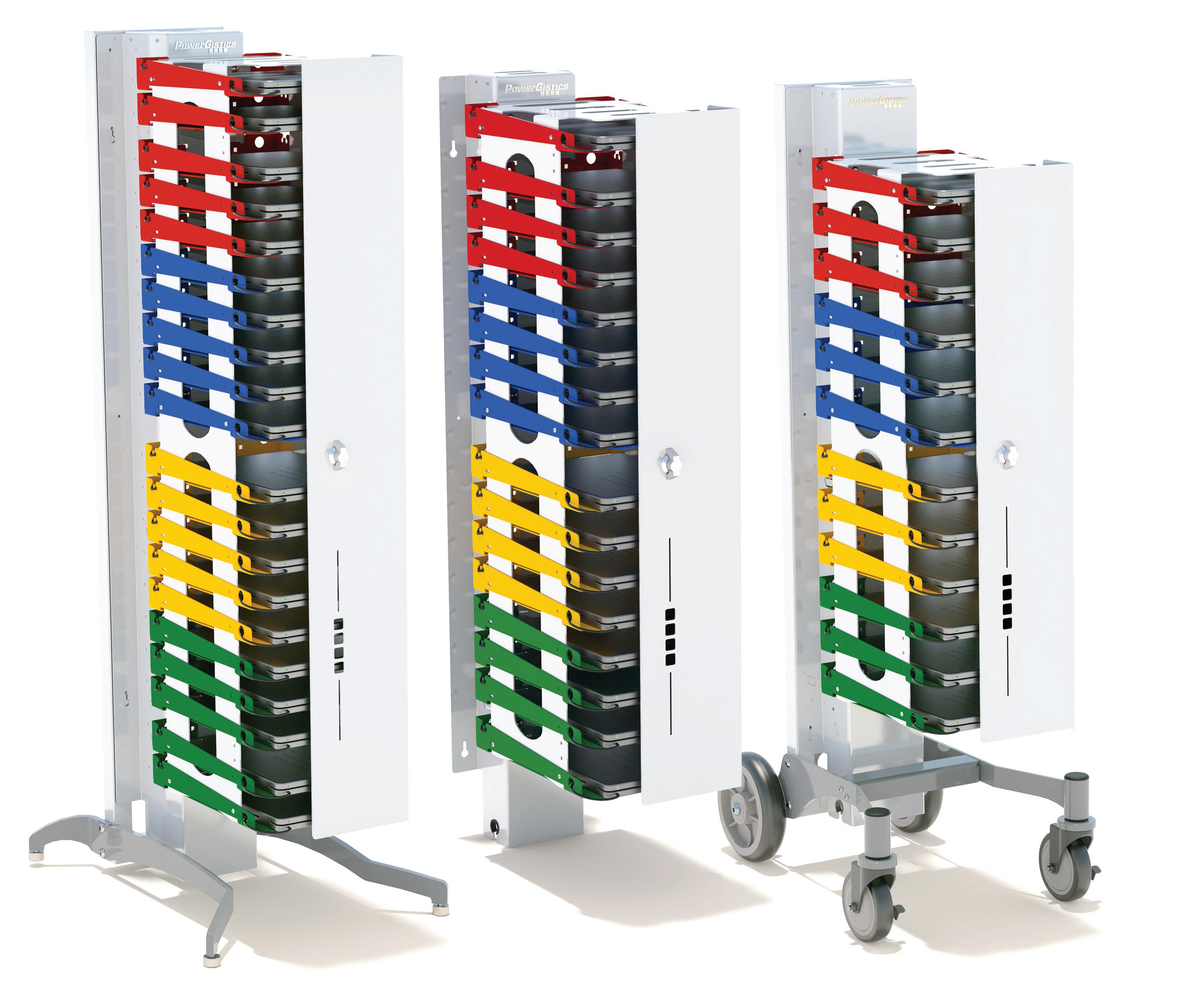

Teachers are busy every day, and time is a precious commodity. The last thing teachers need to waste time on is managing their pupils’ Chromebooks, tablets and other devices. So we’ve designed classroom device storage and charging Towers so that they have one fewer item on their to-do lists.
These Towers were designed for student use:
• Students can easily locate their device with the bright colours and numbered shelves.
• Cables are not confused or messed up because they are wired along their own individual shelf.
• Fewer drops occur because pupils use two hands to put devices on the lay-flat shelves.
• Pupils and teachers save time because they can see devices even with the door closed.
• More space is available in the classroom due to the vertical design, which makes shelves reachable for pupils of all ages and heights.
At 11.25” / 28.6 cm Towers still take up the floor space of charging cart.
Read the Case Study: Increase Classroom Productivity with PowerGistics Towers.
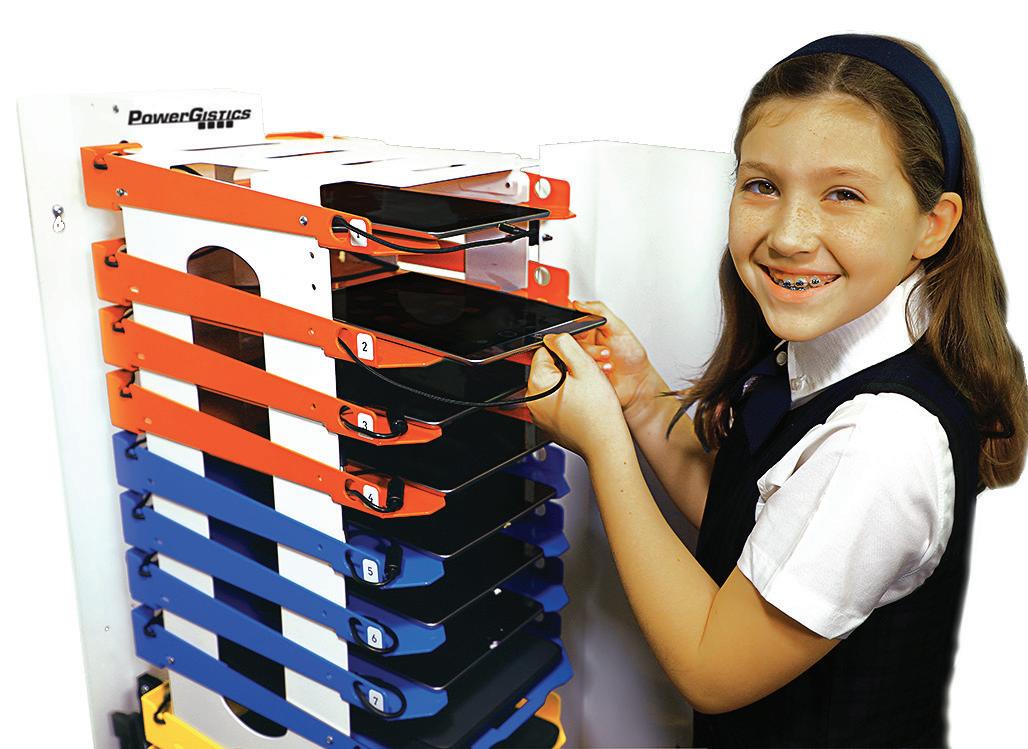

“This is going to cut deployment time in half.”
Andrew Peterson — Third Grade Teacher, Milton School District.

The concerning rise in cyber attacks on the education sector presents an increasing need for both teachers and students to be trained on the importance of cyber security and spotting threats
The education sector now relies heavily on technology to deliver teaching, enable blended learning, and support the day-to-day operations of a school, college, or university. However, the accelerated adoption of technology in such environments has resulted in increased cyber security risks, due to remote working and the growing number of endpoints being used by students and staff. In the last 12 months, 63 per cent of secondary schools and 41 per cent of primary schools identified data breaches or cyber attacks (UK Government, Department for Science, Innovation & Technology, Official Statistics: Cyber security breaches survey: educational institutions findings annex, 2023).
Educational establishments have a responsibility to manage their data properly and securely, however this is becoming a sizeable task to undertake. With more pupils participating in online learning and more staff working from home, the risk of a cyber breach or attack has dramatically increased.
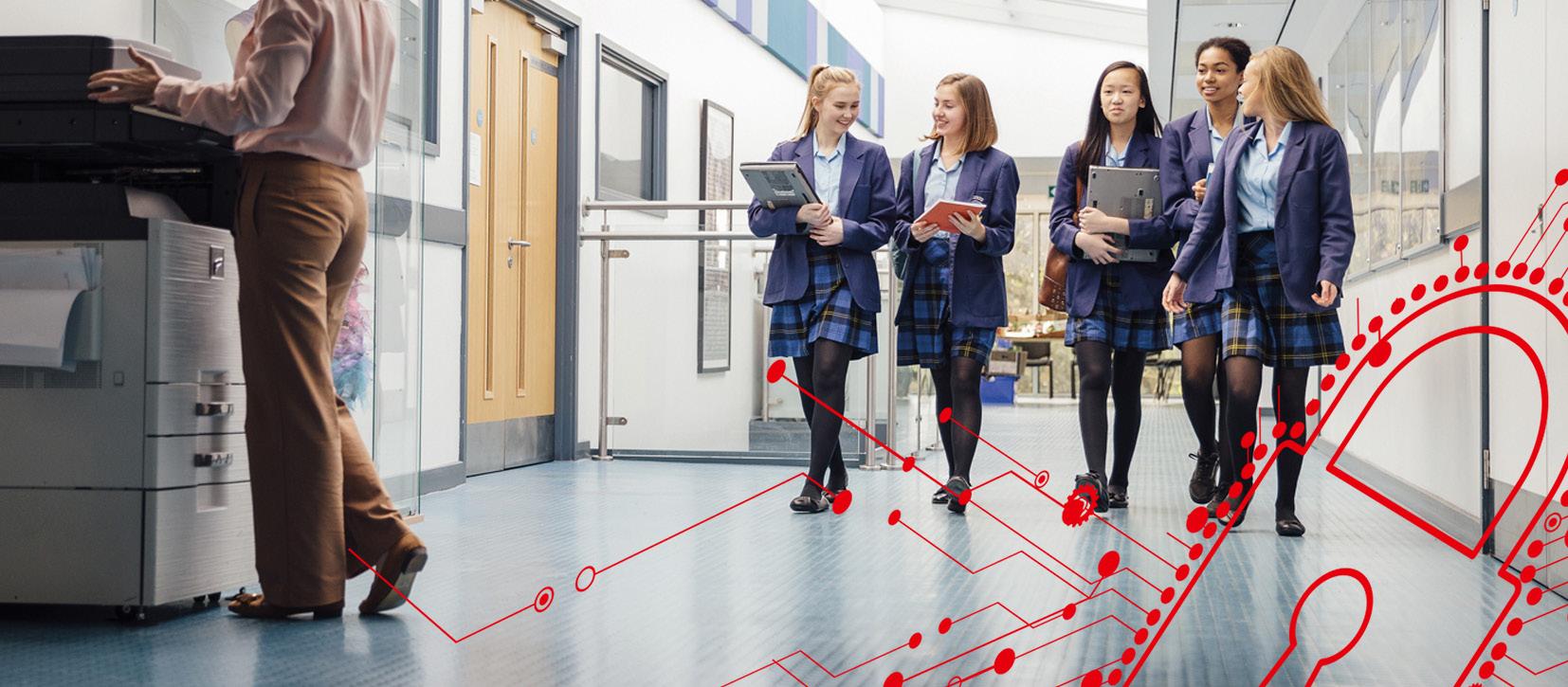
Attacks can take many forms, with phishing emails, hacking, spam, ransomware and malware, social engineering, and denial of service attacks all presenting a threat. Attacks like this cause both financial loss and operational disruption, resulting in reputational damage and downtime in learning. In addition, if highly sensitive data is compromised, staff, students and parents can also be at risk.
The concerning rise in cyber attacks presents an increasing need for both teachers and students to be aware of and trained on the importance of cyber security and spotting threats. One of the simplest and most effective ways to avoid a cyber attack is to educate both staff and students on how to recognise suspicious emails or websites to prevent themselves from falling victim to attacks.
Traditionally, cyber security was seen as the IT managers responsibility, and while their input into a cyber security strategy
is more important than ever, it’s also key to adopt a model of shared ownership.
At Sharp UK our IT specialists recommend implementing effective cyber security training for both staff and students in your educational establishment. Here are our top tips:
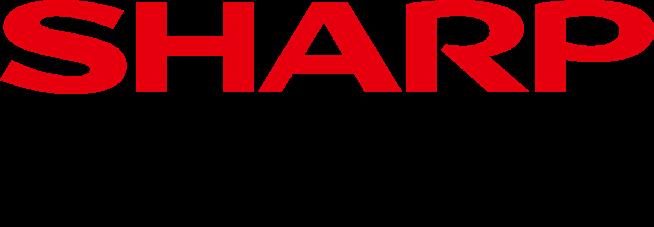

Take a top-down approach
When it comes to cyber security, a strategy of education must start from the very top. Leadership teams are instrumental in implementing and demonstrating cyber security best practice, so it’s vital they understand its importance and make cyber security a top priority in their educational establishments. Being cyber secure is not optional, with guidance published by the Department for Education stating that school governors and managers are required to implement “an effective whole school and college approach to online safety” to “protect and educate pupils, students, and staff in their use of technology” (UK Government, Keeping Children Safe in Education, 2022). In addition, funding and cyber insurance is increasingly dependent on accreditations such as Cyber Essentials and Cyber Essentials Plus. Senior leaders should have the necessary insight into the dangers and effects of cyber attacks. This understanding allows wellinformed decisions to be made regarding policies, procedures, and end-user training. Educational establishments benefit from a vocal cyber security champion to drive awareness and best-practice top-down.
Empower
Teachers may be unaware of the cyber security threats they are likely to encounter in their daily activities, which means they require education and training. However, all too often cyber security training is only offered
to administrators and those in IT related positions, instead of teachers themselves. This is important to overcome as teaching staff are key stakeholders who will enforce cyber security policies on a day-to-day basis. They should receive effective training about the types of cyber security threats that exist, and the impact each of these could have on themselves, their students, and their school. Training should include cyber security quick wins, like multi-factor authentication (MFA), locking devices, protecting student data, and cyber-hygiene. More than just learning for themselves, teachers can take information back to their students, cascading it down and implementing it into learning resources. In addition, when supplied with engaging and informative learning resources like those in our Sharp UK Cyber Security Resource Pack, teachers can easily make cyber security best practice a part of their daily curriculum and culture.
Engage your students
Students currently in education are the most tech savvy generation in recent times, with more technology than ever at their fingertips in both their education and personal lives. Therefore, it’s important they understand the types of cyber security threats they are likely to encounter, in addition to how to stay safe whilst online, and the wider impact cyber attacks can have. Initiating learning-based conversations around cyber security in a classroom environment captures attention. Cyber security, can be challenging to understand, so using engaging and practical activities such as worksheets and quizzes which provide bitesize chunks of information, helps learners to realise its importance. Informative resources paired with collaborative activities from trusted sources such as Sharp UK, are a great first step in increasing students’ knowledge on this complex and ever-evolving subject L
If you’d like access to educational cyber security resources for both students and staff, including leaflets, assembly slides, worksheets, quizzes and more, download your free Sharp UK Cyber Security Resources Pack here
With an increase in the number of cyber attacks on educational settings, we examine the range of free tools and resources available for schools to improve their resilience
Hardenhuish School in Chippenham, Wiltshire, is the latest school to have been hit by a cyber incident, where hackers gained access to IT systems and demanded a ransom in return for restored access.
In January, a number of schools and universities were hit in separate attacks, with highly confidential documents from 14 schools leaked online by hackers.
The schools were targeted by a hacking group called Vice Society, who makes demands for money before leaking the documents if payment is not made.
The documents leaked are reported to have included children’s SEN information, child passport scans, staff pay scales and contract details, stolen in 2022.
One of schools affected was Pates Grammar School in Gloucestershire. Leaked information included one folder marked “passports” contains passport scans for pupils and parents on school trips going back to 2011, whereas another marked “contract” contains contractual offers made to staff alongside teaching documents.
Another folder marked “confidential” contained documents on the headmaster’s pay, and student bursary fund recipients.
The Cyber Security Schools Audit
These examples show that schools are a desirable target for online criminals.
To give a snapshot of schools’ current systems, protections, training needs and preparedness for a cyber incident, the 2022 Cyber Security Schools Audit was published by the National Cyber Security Centre (NCSC) and LGfL-The National Grid for Learning.
It showed that just over half of schools – 53 per cent – said they felt prepared for a cyber incident. This compares to 49 per cent in 2019. And staff training of non-IT staff in cyber security has increased from 35 per cent in 2019 to 55 per cent in 2022.

The awareness of phishing in schools increased from 69 per cent to 73 per cent, and 90 per cent of schools have at least one of the following in place: a cyber security policy, a risk register or a business continuity plan. A third of schools now have all three.
Worryingly, the report shows that a substantial number of schools (78 per cent) had experienced at least one type of cyber incident with seven per cent experiencing significant disruption as a result. For example, 21 per cent of schools had experienced a malware and/or ransomware attack and 18 per cent had experienced periods with no access to important information. Encouragingly, all schools surveyed now have Firewall and 99 per cent have antivirus protection.
Schools continue to need to focus on improvements to security with four per cent having no back-up facilities, 26 per cent not implementing multi-factor authentication and 25 per cent not limiting staff access to USB devices.
In 2019, no school recorded a parent losing money due to a cyber incident, but in 2022 six schools reported they had. E
Staff training of non-IT staff in cyber security increased from 35 per cent in 2019 to 55 per cent in 2022
Sarah Lyons, deputy director for economy & society, NCSC, said in the foreword to the report: “Our schools rely so much on the myriad of data required to run efficiently, including sensitive data on students, parents, governors and staff and yet more work is still to be done to support the cyber security around these essential services. The National Cyber Security Centre has been working with schools and the education sector to provide free tools and guidance to help schools manage their cyber risks effectively and supporting them to keep this valuable information safe.”
Free tools and advice
The National Cyber Security Centre (NCSC) has developed two services that help organisations identify potential cyber security issues and fix them promptly: Mail Check and Web Check. The Web Check service scans websites to check for common, significant vulnerabilities and sends a report to organisations flagging any issues according to severity alongside advice on how to fix the problems.
Mail Check meanwhile is designed to help technical teams assess and improve two areas of email security: anti-spoofing controls to prevent attackers sending emails pretending to be from your organisation,
and email privacy measures to prevent data being altered or read in transit.
NCSC’s Sarah Lyons said: “Technology plays a central role to the way schools operate, so it’s vital they have the right controls in place to identify security issues and fix them promptly.

“By signing up to our pioneering Mail Check and Web Check services, schools can help to defend their email servers and websites from common cyber threats with a few actionable steps.
“We strongly encourage schools to use these free tools to help make the most of modern technology in as safe a way as possible.”
Cyber security toolkit
Charity LGfL-The National Grid for Learning has launched a new, free resource called the Elevate Cybersecurity Toolkit for Schools. It comprises a collection of key documents that schools can use to improve their cybersecurity and also use as a foundation for attaining Cyber Essentials Certification – a foundation level certification designed to provide a statement of the basic controls they should have in place to mitigate the risk from common cyber threats.
The documents include a CyberSecurity Policy Template, which outlines the school’s guidelines and security provisions that
are there to protect its systems, services, and data in the event of a cyberattack.
The Incident Response Plan can be used as a starting point for planning recovery from a ransomware attack, or any other kind of unforeseen outage.
There is also an Example Risk Register that can be used to assess, evaluate, prioritise and manage cybersecurity risks. This can be used by the school’s senior leadership team to report to governors on how they are proactively managing risks and improving cybersecurity.
An Example Asset Register is available that can be used as a starting point to inventory the equipment used in the school. It sounds obvious, but it’s impossible to be secure if you don’t know what you have. There is also an Example Software Register, which can be used to record which software/ systems a school has and whether they hold confidential information. This can be used to complement the Incident Response Plan for prioritising the recovery of services.
Commenting on the new resource, Dinesh Seegobin, head of ICT at STEP Academy Trust, said: “We all know that being aware of cybersecurity is critical but how many of us can claim to be experts? In addition, there is so much information out there to digest, where do you begin? This is where, yet again, LGfL has come to our rescue. The Elevate Cybersecurity Toolkit is an absolute game changer. A onestop shop to help get you on track backed up with all the weight of industry experts.” L
Read the Cyber Security Schools Audit here
In January, a number of schools and universities were hit in separate attacks, with highly confidential documents from 14 schools leaked online by hackers.
The digital divide is the inequality of those who have access to technology and those who do not. The digital gap exists for a variety of reasons such as location, lack of resources, lack of digital expertise and finance. To prepare students for a digital future, we need to fix the digital gap so that all students have a level playing field
Ultimately, the role of a teacher is to educate, prepare, encourage, and understand students. For them to fulfil this role classrooms need to be stocked with proficient and easy to access technology to help prepare students for their future.
The freedom that students gain when using technology introduces creative workflows, encouraging engaging experiences. When students are engaged, they are likely to understand and retain more information. Now that students have returned to the classroom after the pandemic it is extremely important to work on their digital literacy skills. The pandemic highlighted how we rely on technology to complete day-to-day tasks.
Digital literacy is the understanding of how to navigate, interpret, and efficiently use technology. As the use of technology in everyday life increases, it is important that we are preparing the next generation today ready for their future. It has been reported that over 75 per cent of jobs will require digital skills by 2030; providing students with technology, introduces them to skills that will benefit them throughout their lives.
Another problem highlighted by the digital divide is inequality. Offering equality in education means that all learners should have equal access to educational opportunities regardless of their background.
LapSafe® have been working with the education sector for over two decades to help bridge the digital gap with their range of storage and charging solutions. LapSafe® understands how important it is to help schools align their tech strategy with their needs to reach their overall goal.
LapSafe®’s range of products helps teachers and IT technicians to easily manage devices such as laptops, Chromebooks,

or tablets in volume. Devices can be kept fully charged and updated ready for use. Their self-service solutions allow assets to be loaned to students without staff interaction, when and where required.
Providing a bank of devices in trolleys, cabinets or lockers, allows devices to be shared and gives all students access to a device. This in itself helps to ease the digital gap as no student is at a disadvantage and left without access to technology.
Andy Ross, head of ICT at Dundee & Angus College, commented: “We received positive feedback from all areas of the college, where the laptop loan service was being used by students – it is really helping to level out the digital poverty divide.” Across the world, technology has created new economic and social opportunities. Remote working, self-directed learning and new industries are opening; therefore, we should be preparing students for an ever-evolving digital landscape. Having access to a device doesn’t only provide students with digital skills it also provides key life skills such as responsibility. When a student is borrowing a device, it is their responsibility to take care and use the devices properly, when finished they are expected to return the device ensuring it is placed back on charge. This life skill is transferable into all aspects of life and is important children learn it from a young age.
As education budgets tighten comes the worry of how to afford new technologies. This leads schools to explore sustainable options to save on costs and reduce their carbon footprint.
To assist with this LapSafe® has a range of sustainable storage and charging solutions that can withstand the test of time. Their Mentor™ storage and charging trolley was built with this in mind. Its robust construction ensures that it will last and can be upgraded
when the schools change their devices. PETROC College have been using LapSafe® products since 2006, and some of their LapSafe® storage and charging trolleys were purchased almost twenty years ago!
A spokesperson from PETROC College said:
“The robustness of the Mentor™ unit is the reason why they have stood the test of time, they are well constructed with good security. We looked at other makes and models of trolleys and you needed to add the power supplies into the trolleys yourself, whereas the Mentor™ has its own ultra-smart power management system and doesn’t need the devices own AC adaptors. They are the only trolley which have upgradable modules inside.” LapSafe®’s power management system ensures all devices are charged simultaneously in the shortest possible time and incorporates three key areas of protection; soft-start, surge, and residual voltage. These provide the highest level of protection for the user and your equipment. Incorporated into LapSafe®’s power management is PowaSave™. PowaSave™ understands when a group of devices are fully charged, it switches off the power supplies, meaning no electricity is wasted, keeping environmental damage and running costs low. Your carbon footprint is reduced. The clever technology automatically switches the power back on when the devices need it. As a market leader within the education sector LapSafe® feel that it is their role to align their values with their customers to ensure that their products are not only suitable for today’s classroom but also for tomorrows.
Visit


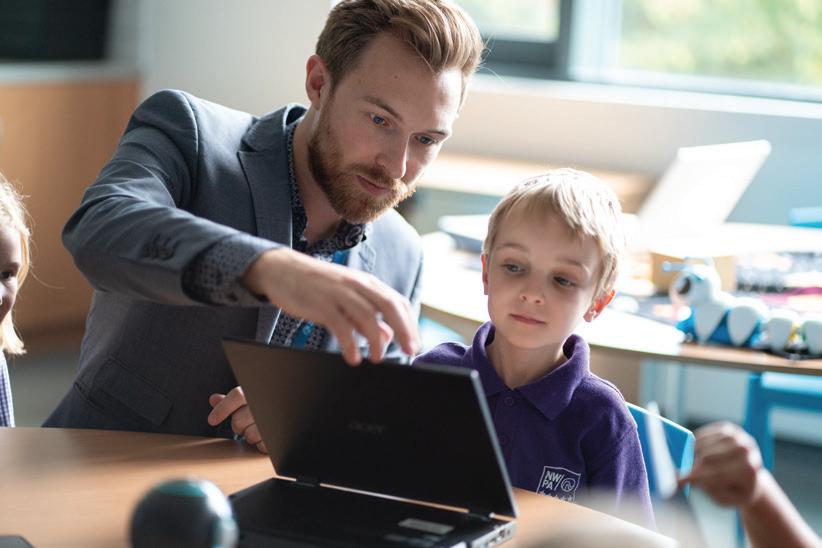
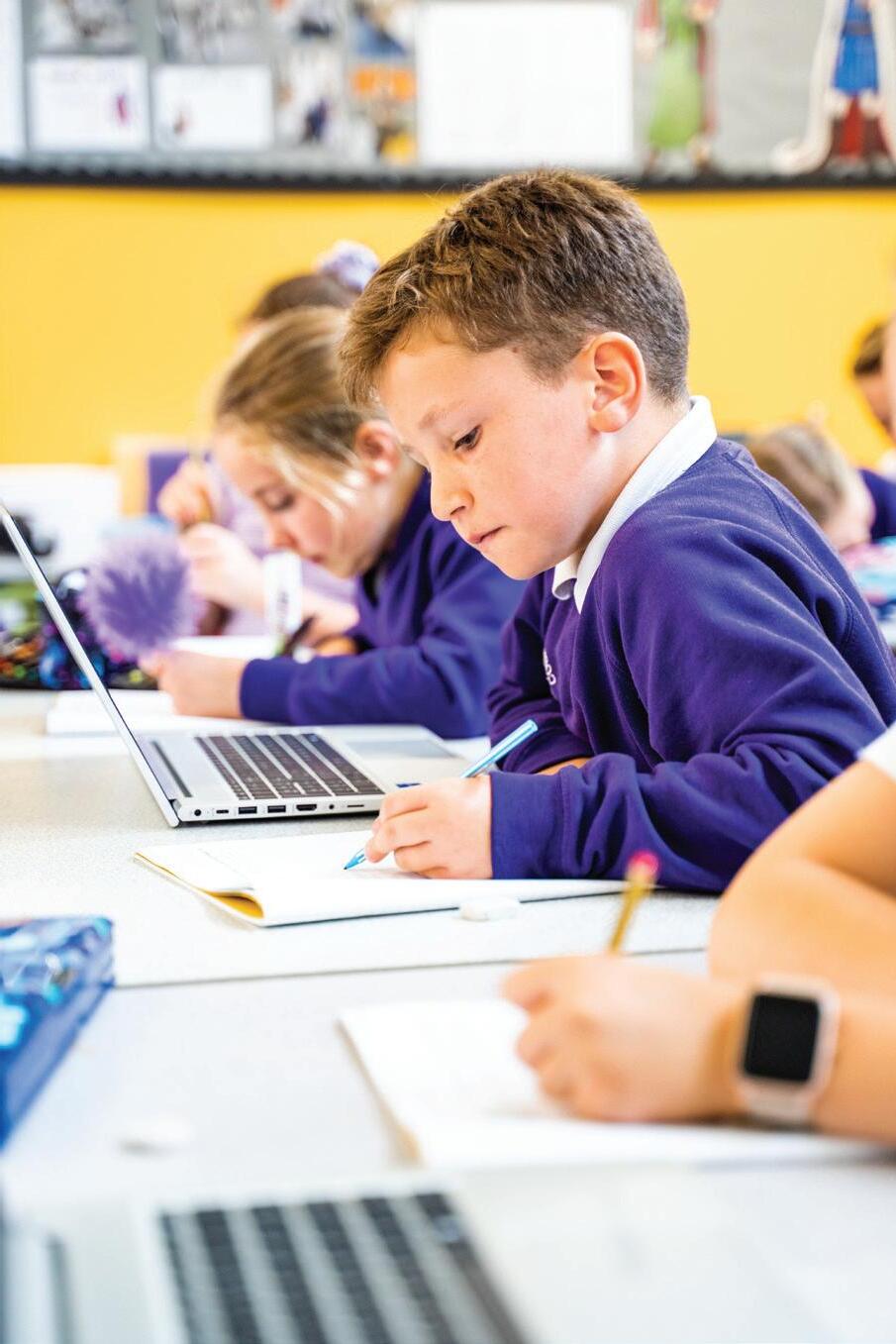
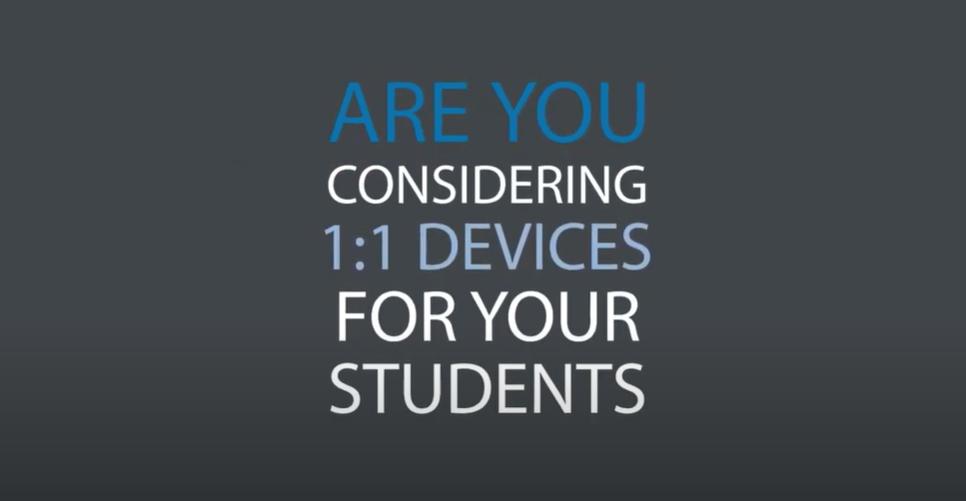
Step inside Pinnacle’s mobile STEAM lab and discover Konetic and Konvolve.


This spring Pinnacle will be touring the UK, visiting schools and specialists in educational design and construction, promoting two patented STEAM products in their brandnew mobile STEAM lab.
The lab features Konetic, an innovative service supply pod, which is integrated or surface mounted to the ceiling. Konetic can be deployed in just 20 seconds and is ready to use in STEAM subjects, which require gas, compressed air, or power supply.



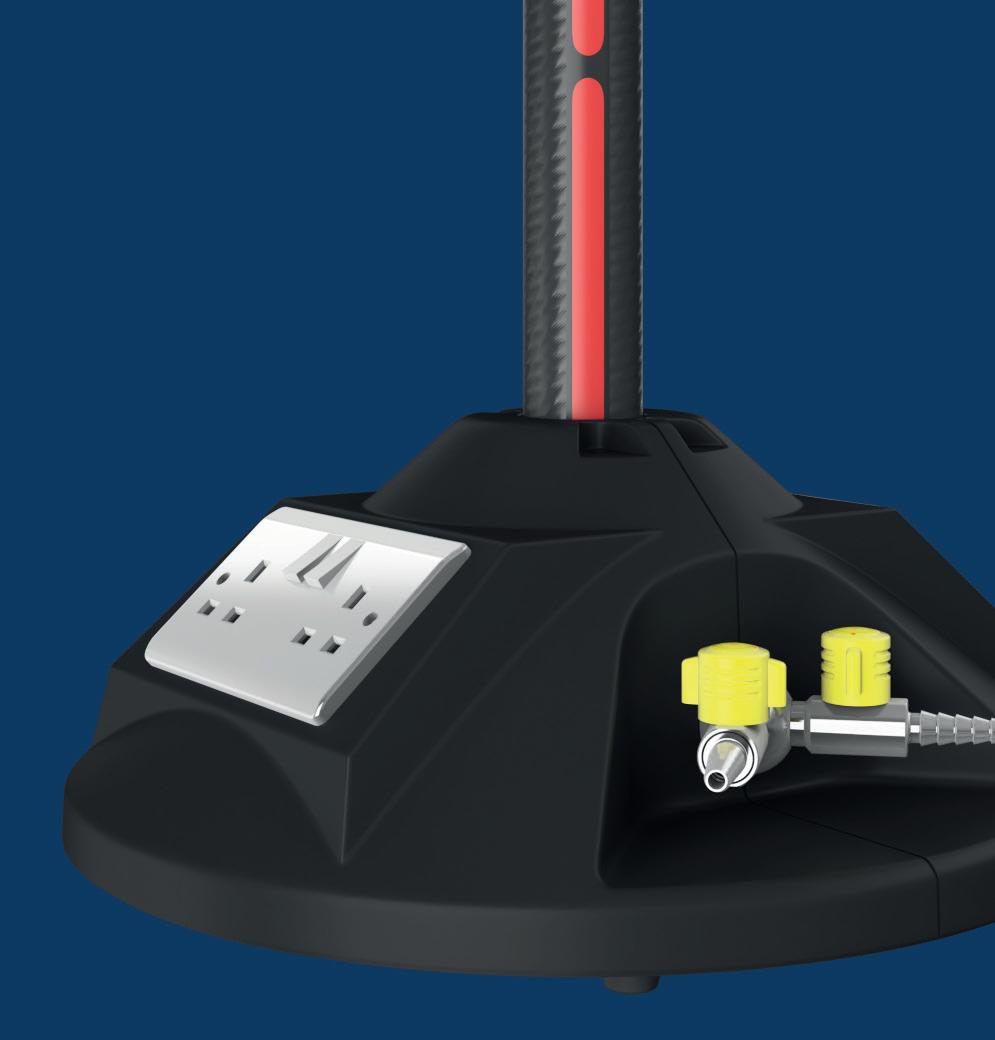
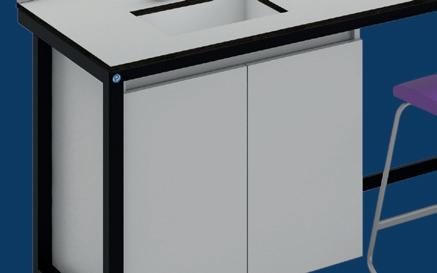
Pinnacle will also be demonstrating Konvolve, a component-based lab bench system designed to make classrooms flexible, safer, and future-proofed.


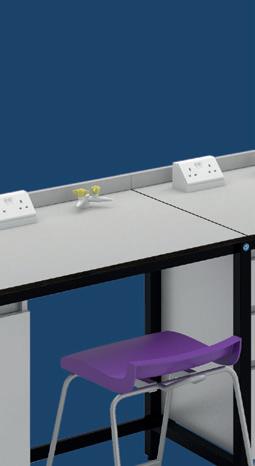


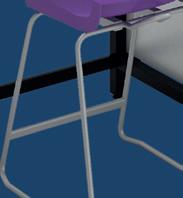





“STEAM education has revolutionised teaching by providing a more integrated and collaborative curriculum to help

prepare students for careers in a wide range of STEAM related fields,” says Managing Director, Daryl Stanley.
“We wanted to showcase Konetic and Konvolve in multiple locations so that visitors can try and test the unique properties of these innovative STEAM products. Konetic and Konvolve deliver a smarter solution, combining design, functionality, value, and easy installation.”



Pinnacle is a full service FFE consultancy and furniture manufacturer dedicated to providing innovative learning spaces and refurbishment solutions for the education sector.







If you would like to have the Pinnacle STEAM lab visit your o ces or school, for more information please contact: sales@pinnacle-furniture.co.uk


The Schools & Academies Show in London on 17 May brings together thousands of school and academy leaders to connect, discuss new ideas and debate the biggest challenges and trends that will shape the future of the education sector

The Schools & Academies Show will return to the ExCeL, London on the 17th May 2023, once again bringing together school leaders across the country to connect, spark new ideas, hear from the sector’s most influential speakers and explore the biggest challenges currently facing the wider education community. Attendees at the show will gain access to over 30 hours of CPD certified content, spanning across seven themed seminar theatres, ensuring the show continues to attract a wide range of education professionals and key decision makers. The dedicated Business & Finance Theatre will provide a key platform to connect with fellow school business leaders, gain insider knowledge and expert guidance on how to drive efficiency and improve financial management across your school, academy or MAT.
The show will bring together the sector’s most decorated and inspiring speakers to share their knowledge, expertise and practical guidance, including representatives from the Department for Education, ISBL, National Governance Association, Education Policy Institute, NAHT, ASCL and more! Each speaker, dedicated to their respected craft across the education sector, will lead in either a keynote session, live debate or discussion or tailored workshop, ensuring our visitors feel empowered, inspired and ready to implement key techniques, guidance and resources at the forefront of their institution to drive significant improvements.
Speakers include Sir Mo Farah, Olympic Gold Medallist, who will be taking part in an interactive interview where he will be sharing how education played a part in his Journey to Olympic Gold, and the value of extracurricular activities like PE to student
development. He’ll also share why believing in one student and helping them to achieve lays the foundation for future generations. Other speakers include Stephen Morales, Chief Executive, of the Institute of School Business Leadership (ISBL), Paul Gosling, President of the National Association of Headteachers (NAHT), and Professor Becky Francis, Chief Executive of the Education Endowment Foundation. Emma Knights OBE, CEO of the National Governance Association will also be sharing her wisdom, as will Evelyn Forde MBE, President of the ASCL, and Prof. Dame Allison Peacock, CEO of the Chartered College of Teaching. Other speakers include Baroness Blower, Co-Chair of the AllParty Parliamentary Group for the Teaching Profession, Terry Clasper from the DfE’s National Tutoring Programme, and Natalie Perera, Chair of the EPI.
The show is a fantastic opportunity for visitors to meet new people, make connections, build relationships, and discover new organisations via our dedicated networking areas, including the Government Education Village, an area where visitors can meet with senior representatives from the Department for Education, providing a unique platform to learn more about upcoming policy and developments within the sector, whilst having your questions answered in an informal setting. Another networking area is the ConnectEd Lounge, providing a key area for attendees to connect and collaborate via one-to-one meetings.
The Educator’s Networking Hour meanwhile is where visitors can connect, share their experiences and develop key partnerships with their peers. Taking place in the Networking Area at the end of the show, attendees are able to help themselves to complimentary drinks and meet other visitors.
To ensure that the show attracts a broad range of influencers and key decision makers in education, for 2023 the Teaching & Learning Theatre has been established, providing frontline teachers and practitioners with practical advice, strategic insights and best practice examples that can be implemented across their school, academy or MAT. There will a session on how to build your curriculum, chaired by Alix Robertson from the Centre for Education and Youth.
The exhibition floor will host over 150 innovative education suppliers, showcasing the latest cutting edge products, providing an excellent opportunity for visitors to save time and money sourcing suppliers and solutions to their most prominent challenges. With specific zones hosting specialised exhibitors, the Business & Finance Zone will feature dedicated suppliers who will be on hand to offer their financial guidance, resources and services to help you overcome your biggest challenges and drive efficiencies across your organisation.
Registration is completely free for Schools, Academies, MATs, Local Authorities, Central Government, Specialist Charities and the wider education sector. Register your free place to be a part of the discussion and join the education community here. L
thebringshowThewilltogether sector’s most inspiring speakers to share their expertise,knowledge, guidanceand
Holmes and Partners Ltd provides a full end-to-end sponsor licence and visa application service to companies, educational institutions and individuals.

Based in Leeds UK, Holmes & Partners Ltd. is here to assist everyone across the globe to gain legal entry to the UK for work, study, for tourism and living here.
Services, not limited to...
+ Student Sponsor Licence
+ Child Student & Student Visas

+ Parent of a Child Student Visa
+ Student's Visitor Visa
+ Short-term Visa
Service Package Range


+ Fully Outsourced Service
+ Part Outsourced Service
+ Hotline Service
Get in touch today! WWW
What do independent schools and colleges need to consider when taking on international students and teaching staff from other countries? We speak to Michelle Holmes, founder and managing director of Holmes & Partners, to find out
1. What do independent schools and colleges need to do to be fully compliant with immigration regulations for international students?
UK independent schools and colleges that wish to enrol international students must comply with immigration regulations set forth by the UK Visas and Immigration (UKVI).
First, they need to apply for a sponsor licence from the UKVI to be able to sponsor international students to study in the UK. The ideology underpinning the sponsor guidance framework is clear: to achieve a cost neutral immigration system to the taxpayer, UKVI policies have increasingly shifted the burden of immigration control onto the sponsors of migrant students and workers through a regime of punitive compliance measures and monitoring. This includes maintaining proper records, monitoring students’ attendance and progress, and reporting any changes or non-compliance to the UKVI.
2. Likewise, what do independent schools need to consider when taking on teaching staff from other countries?
When UK independent schools consider hiring teaching staff from other countries, there are several important factors to consider. Firstly, the school must ensure that the teaching staff from other countries have the appropriate visa to work in the UK. The pay and conditions offered to teaching staff should be fair and in compliance with UK employment law. Finally, the school should ensure that it complies with UK immigration regulations, such as conducting right-towork checks and monitoring the visa status of teaching staff from other countries.
If the school wishes to employ an international worker who requires sponsorship to work in the UK, they can do this by obtaining a Sponsor license from the (UKVI). The Sponsor license allows the school to sponsor the worker’s visa application
and to employ them legally in the UK. The school must meet certain requirements and obligations to maintain their sponsor license, such as complying with immigration regulations, keeping records, and reporting any changes or non-compliance to the UKVI.
3. For schools and colleges that do not have time for the administrative task of being compliant with immigration regulations, where can they go for help and support?

One option is to engage the services of an immigration specialist or an education consultancy firm that can provide guidance and support on immigration regulations and compliance. These experts can provide advice on visa applications, compliance requirements, and reporting obligations, as well as support with record keeping and monitoring students’ attendance and academic progress.
Another option is to join a professional association or network for independent schools and colleges, which often provide resources, training, and support on immigration regulations and compliance. These associations can also provide networking opportunities and access to best practices and resources from other schools and colleges.
The UK Visas and Immigration (UKVI) also provides support and guidance for schools and colleges on immigration regulations and compliance. They offer a range of resources, including guidance documents, webinars, and a dedicated helpline for queries and support.
4. What are the benefits of working or studying in the UK for international citizens?
Working or studying in the UK offers a range of benefits for international citizens. The UK is home to some of the world’s most prestigious universities and schools, providing access to a high-quality education and worldclass facilities. Working in the UK can offer international citizens access to a range of
Michelle Holmes, the founder and managing director of Holmes & Partners Ltd, brings a wealth of experience in compliance and immigration matters


Before establishing her consultancy, Michelle served as the head of compliance for a multinational organisation where she provided guidance on sponsor license and student matters for a wide range of independent schools and colleges.
career opportunities across various sectors, including finance, technology, healthcare, and education. The UK is a melting pot of cultures and ethnicities, making it an ideal place for international citizens to experience a diverse range of people, languages, and traditions. Studying or working in the UK provides international citizens with an opportunity to improve their English language skills, which is one of the most widely spoken languages in the world and essential for many international careers. Additionally, the UK is known for its high standard of living, offering excellent healthcare, safety, and quality of life. Finally, living and working/studying in the UK can be a transformative experience, providing international citizens with opportunities for personal growth, self-discovery, and new friendships and connections. Overall, the UK offers many benefits for international citizens looking to work or study abroad.
Several schools volunteered to help develop new designs, contributing to the development over a year long collaboration with the Action Mats developers. The brief was to create a resource to help children with emotional self-regulation.
and support social emotional learning, to provide them with key skills they will use into adulthood.
Multi award-wining educational resource creator Action Mats has developed the world’s first Mindful Mats. Having won Best Primary Resource at the Education Resources Awards 2022, Kids Judge BETT 2022 and Innovation Award at GESS Dubai 2022, for their Action Packed set designed for Key Stage 1 and Key Stage 2, Action Mats developed Mini Mats for EYFS.
Mini Mats are created to promote the development of movement skills in EY children. The focus is on balance, fine and gross motor-skills as well as handeye coordination and dexterity.
Feedback from schools using Action Mats resources, informed that many were using some of the designs from the collections, in ‘sensory circuit’ configurations. Indeed, requests were made to look at sensory circuits activities as dedicated mat designs, rather than bending the existing ones to suit.
During that year designs were sketched and assessed, produced as prototypes and tested with children in all year groups. Three schools in the South West, North and South East of England tested the designs over several months, assessing engagement, understanding of the tasks shown in the graphics, enjoyment of the activities and effectiveness in delivering the required results.


By the end of the year, a new range of sixteen mats took on the product name, Mindful Mats and was ready for launch.
Mindful Mats helps schools practice mindfulness with children, using selfregulation activities that can help improve a child’s emotional wellbeing, help them focus and so aid effective learning.
Perfect for all primary school ages, Mindful Mats are designed to help children regulate their emotions using the self-regulation and sensory stations in the set of designs. Activities range from cerebral and active, to controlled and dynamic all within a 1M x 1M space.
Helping children to understand and manage their emotions, can aid behaviour management
The mats can be used individually or collectively, offering different routes to regulation, whether that’s breathing techniques or controlled physical activities. Children are provided with tools to help them refocus, redirect and recover and above-all, be ready to reengage and ready to learn. L

FURTHER INFORMATION
www.actionmats.co.uk


With research showing that many teachers and parents underestimate the recommended time children should be active for, this year’s National School Sports Week is aiming to get more children ‘playing for fun, playing for 60’ between 19 and 25 June
The UK Chief Medical Officer (CMO) recommends that children aged five to 18 should be highly active (with an elevated heart rate) for an average of at least 60 minutes a day, across the week in order to stay happy and healthy.
This can include all forms of activity such as physical education, active travel, after-school activities, play and sports.
However, research by Teacher Tapp commissioned by the Youth Sport Trust shows that 52 per cent of teachers surveyed believe that children should be active for 30 minutes a day or less, and only 35 per cent of teachers think that children should be active for 60 or more minutes a day. This highlights the need for more support and training for schools and teachers.
Similarly, YouGov research commissioned by the Youth Sport Trust reveals that parents are more likely to believe that children only need to be active for 30 minutes a day, less than half of the recommended guidance.
In a bid to drive up awareness of the Chief Medical Officers’ guidance, the Youth Sport Trust has launched its annual National School Sports Week campaign, powered by Sports
Direct, to get more children ‘playing for fun, playing for 60’ between 19 and 25 June. The campaign will work with families, schools and across society to ensure that people are better informed about the benefits of sport and play for their children.
National School Sports Week is aiming to boost children’s activity levels by encouraging people and organisations to make a #PledgeToPlay for 60 minutes every day during this week.
Last year, schools taking part in National School Sports Week provided more than 650,000 young people with opportunities to be involved in PE, play and sport.
Chief executive of the Youth Sport Trust, Alison Oliver MBE, said: “We know children are leading increasingly sedentary lives. Screen time is up, and time spent in nature is down – it’s no surprise that parents and teachers are increasingly concerned about children’s physical activity levels and the consequence of this in the classroom.
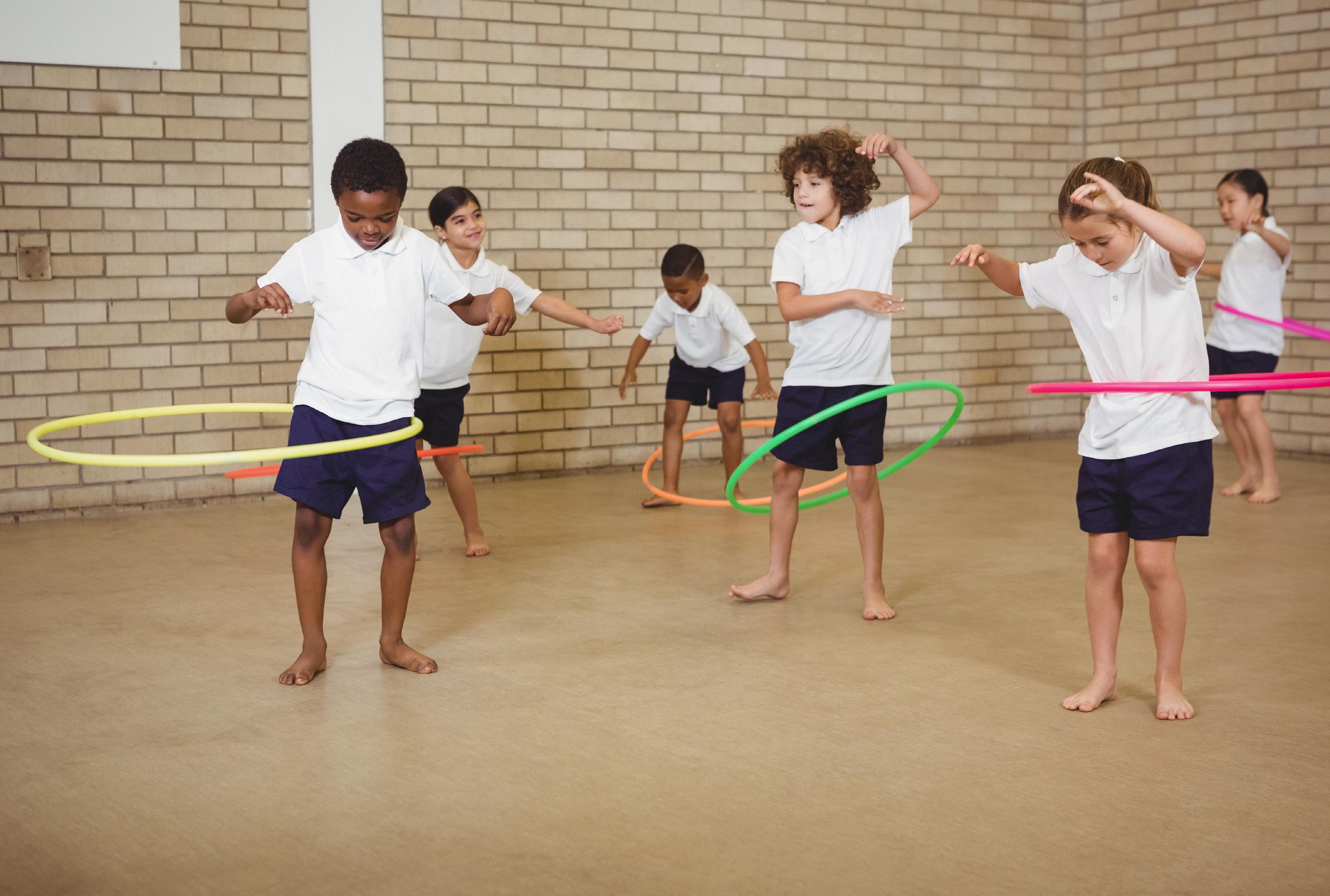
“Children’s formative years can influence their wellbeing, development, education outcomes and physical activity levels well into adulthood. There is a compelling evidence base for more play and sport in children’s lives. Pockets of innovative practice which are unlocking new ways to inspire young people to get active are emerging, but a priority has to be raising public awareness of the CMO guidance should be a priority alongside action to help schools and families respond.
“National School Sports Week is a great opportunity for us to engage with schools and families. We’re excited to share some brilliant ideas and guidance as well as uniting a movement of organisations to help amplify why this is important and what’s available at a local level. We are inviting the nation to #PledgeToPlay.
“We are rallying a call. Daily physical activity, play and the development of E
The UK Chief Medical Officer recommends that children aged five to 18 should be highly active for an average of at least 60aminutes day
The National Education Show and ALN / SEND Show is full of inspirational speakers and exhibitors offering practical strategies, services and resources.



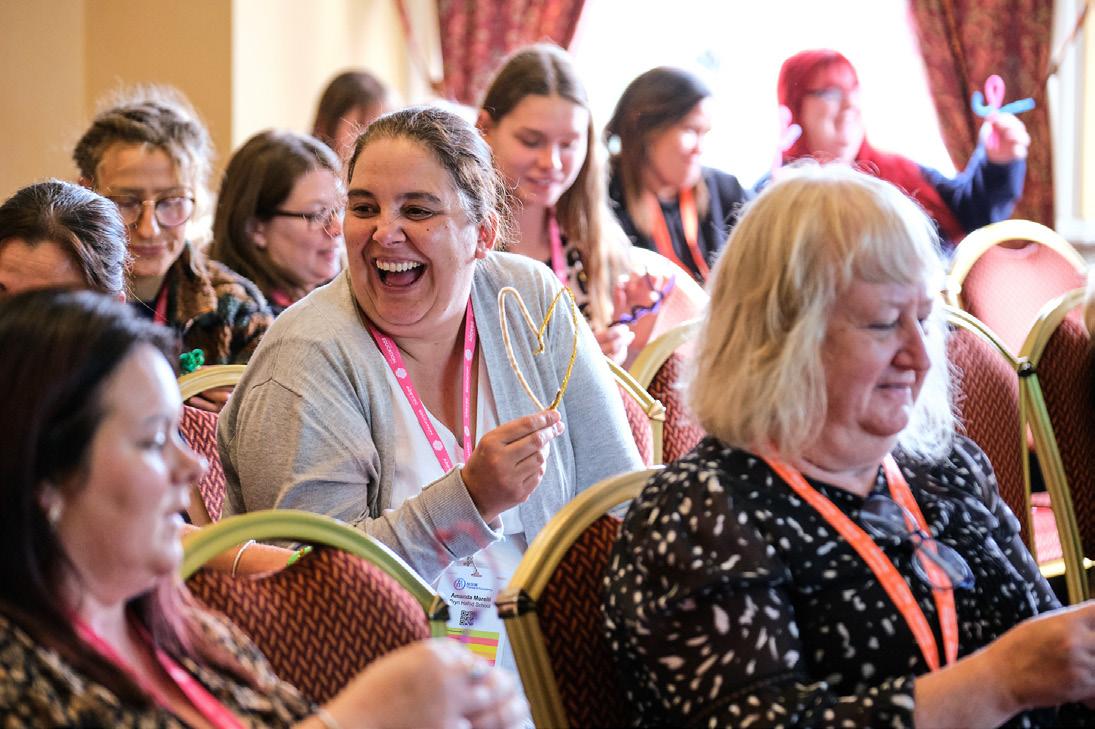









Venue Cymru, Llandudno
16th June 2023 | 14th June 2024
City Hall, Cardiff
6th October 2023 | 4th October 2024
tickets




info@nationaleducationshow.com www.nationaleducationshow.com

Working with:

physical literacy through physical education and school sport should be an integral part of every childhood, and we are really excited to work with Sports Direct to make play and sport more accessible for more young people and in turn help them lead happier and healthier lives.”

This year’s School Sports Week sees the return of Sports Slam – a children’s fitness initiative which encourages 7–11-year-olds to participate in at least 60 minutes of activity or sport each day. Sports Slam 2023 will include a week-long programme of fun-fuelled activities and challenges, that will inspire kids to get active, while helping them develop skills that go beyond court, field and track.
During National School Sports Week, Sports Slam will enlist the support of some of the country’s most exciting and revered athletes to tour schools across the UK, engaging with the nation’s next generation of sports stars. Alongside getting active and discovering new sports, Sports Slam will help children develop personal skills like confidence, teamwork and mental wellbeing.
Take the pledge
As part of National School Sports Week, schools, families and organisations are called to make the pledge to ‘play for fun, play for 60’. So far 146,172 pledges have been made. The pledge supports the government ask that children are active within school
for 30 minutes a day, and then outside of school for at least another 30 minutes, supporting every child to reach the minimum amount of 60 active minutes. Once a pledge has been made, access will be granted to a range of supporting materials and resources to help achieve the active
minutes. The resources are tailored to suit all age ranges with separate resources to support schools, families and organisations. L
FURTHER INFORMATION
www.youthsporttrust.org

In today’s fast-paced and ever-evolving world, the ability to think creatively is not only a valuable skill but a necessity for students who want to succeed in their future careers. In fact, according to the World Economic Forum’s “Future of Jobs” report, creativity and innovation are two of the top five skills people will need to thrive at work by 2025. By fostering creative thinking in the classroom, teachers can help students develop problem-solving skills, critical thinking abilities, and unique selfexpression. Students with strong creative thinking skills will also be better equipped to face life’s challenges and adapt to change. Here are five ways teachers can cultivate creativity in the classroom:
1. Create a supportive environment: Establish an atmosphere where students feel comfortable expressing their ideas without fear of criticism. Encourage risktaking, making mistakes, and learning from failure. This supportive environment can give students the confidence to explore their creativity and discover new skills.

2. Encourage brainstorming and group discussions: Regularly incorporate brainstorming sessions and group discussions into lessons. With these activities, students learn to share their
ideas, explore different perspectives, and build on each other’s suggestions. Use visual aids such as mind maps, sticky notes, or whiteboards to help students visualise and organise their ideas.
3. Incorporate open-ended projects: Design assignments and projects that allow students to approach problems in various ways and express their unique creativity. Encourage students to experiment with different creative mediums such as writing, art, presentations, or multimedia projects.
4. Encourage reflection: Help students enhance their self-awareness by encouraging them to reflect on their creative work and experiences. This can be done through journaling, discussions, or peer feedback sessions. Students can identify areas for improvement and develop a better understanding of their unique thinking styles.
5. Use creative prompts: Integrate creative prompts into lessons to stretch students’ imaginations and inspire them to think outside the box. For example, the brainsparker app has thousands of random prompts that can be used as triggers to kickstart fun and engaging creative activities.

Encouraging creative thinking in the classroom can benefit both teachers
and students, making the learning process more enjoyable and effective for everyone. Additionally, teachers will be equipping their students with strong creative thinking skills preparing them to excel in a fast-changing world. L
Gabriella Goddard is the founder of Brainsparker App www.brainsparkerapp.com(Available on Apple School Manager)
www.brainsparker.com


The Education Business Awards, which take place on 14 June in London, continue to celebrate the outstanding work, commitment and achievements of the education sector. With new categories introduced this year, the stage is ready to welcome the unsung heroes of the sector

The Education Business Awards, sponsored by Viking, recognises the vital and inspirational work of the education sector as it shapes our future generations. Schools and colleges continue to operate during difficult times. While still feeling the effects of the pandemic and the lost learning it created, schools forge ahead despite the unrest caused by teacher strikes, funding issues, workload, teacher shortages, and the cost of living crisis. The Education Business Awards continues to seek out the unsung heroes and celebrate their incredible achievements in all aspects of school life.
For the first time in 2023, the awards will recognise the individual leaders paving the way in the primary and secondary sectors through the EB Leadership Award, as well as innovative educational resources that can support teaching and help to enhance pupil engagement through the Education Resource Award. Other awards will be presented to those who show excellence in catering, environmental achievements, school buildings, IT provision, SEN inclusion, and many others.
The Awards will be presented by two time Olympian Donna Fraser OBE, following the drinks reception, exhibition and awards luncheon.
Nomination entry is now closed and judges are collating the shortlist, which will be announced shortly.
The Outstanding Progress Award is presented to the schools that have made significant improvements in the leadership, management and educational performance of the school. Awards will be presented in the primary sector, sponsored by Action Mats, secondary sector, sponsored by Swiftclean, and Independent sector, sponsored by Viking.
The ICT Innovation Award, sponsored by Richo, is presented to the educational establishment that can demonstrate innovation in its approach to teaching IT and computing that furthers the learning experience of all its students.
The ICT Facility Award meanwhile is awarded to the educational establishment that has developed a first class teaching environment
for ICT and related subjects. The STEM Award meanwhile, is presented to the educational setting that has put in place a first class environment for teaching STEM subjects.
With a push for schools to meet net zero targets, the Environmental Practice Award, sponsored by Ubris Schreder, recognises the school that goes above and beyond when it comes to minimising its impact on the environment, as well as providing quality environmental education to its pupils.
The School Building Award is presented to the establishment that has a school building designed to provide quality and inclusive learning environments, that demonstrate modern methods of construction and are sensitive to the environment and its surroundings.
With schools having to be money-savvy and get the most from their budges, the School Procurement Award, sponsored by Konica Minolta, recognises an individual project where a school has worked with an outside agency or local authority to refine its buying practices and increase value to the taxpayer.
The School Security Award, sponsored by Konica Minolta, recognises the school that has made outstanding efforts to increase security through a combination of increased awareness in staff and pupils and the procurement and installation of additional security measures.
The Community Award, sponsored by Holmes & Partners, recognises schools working in partnership with other public sector bodies, such as the local authority, police, NHS or Fire Service, on projects that bring specific benefits to the local community.
It is well recognised that play opportunities are vitally important to the wellbeing and development of children. As such, the Play Space Award is presented to school that has provided an outdoor playground environment where innovative equipment creates opportunities for learning and developing.
With teacher recruitment and retention an ever-present challenge for schools, the School Recruitment Award recognises an educational establishment which has invested in its recruitment methods and processes to ensure a timely intake of quality teaching and support staff.
The School Catering Award is presented to an educational establishment in the UK that can demonstrate a commitment to healthy eating and value for money through the provision of a first class catering service available to all students.
The School Sports Award is awarded to the educational establishment that can demonstrate the provision of first class teaching and facilities for sport and PE.
The SEN Provision Award, sponsored by Nasen, is presented to the SEN Establishment that can demonstrate an increase in the quality of care and education services provided to students with Special Educational Needs.
The EB Leadership Award will recognise an inspirational school leader in both a primary and secondary school, whose role has led to significant and positive improvements in the school’s performance by inspiring and facilitating the wider school team and community.
The School Business Manager Award, sponsored by Viking, will be presented to an individual whose business leadership skills and commercial outlook have had a positive impact on the school’s budgeting and strategic decision making.
The Education Resource Award meanwhile is given to a company providing an innovative educational resource that can support teaching and help to enhance pupil engagement.
The shortlist for the Education Business Awards will be announced here.
The BusinessEducationAwards continue to seek out the unsung heroes and celebrate their achievements in all aspects of school life



There’s a reason schools across the world have chosen Rubb’s tailor-made solutions to meet their goals. Rubb’s fabric tension buildings are flexible, rapidly constructed, and built to last.
To learn more about Rubb’s alternative sport facility solutions, visit our site or contact the team today. Ask about our flexible financing options—all Rubb structures are now available to rent.
MORE


